
About UsThe Numismatic Bibliomania Society is a non-profit organization devoted to the study and enjoyment of numismatic literature. For more information please see our web site at coinbooks.org SubscriptionsThose wishing to become new E-Sylum subscribers (or wishing to Unsubscribe) can go to the following web page link MembershipThere is a membership application available on the web site Membership Application To join, print the application and return it with your check to the address printed on the application. Print/Digital membership is $40 to addresses in the U.S., and $60 elsewhere. A digital-only membership is available for $25. For those without web access, write to: Terry White, Treasurer AsylumFor Asylum mailing address changes and other membership questions, contact Terry at this email address: terrywhite5475@yahoo.com SubmissionsTo submit items for publication in The E-Sylum, write to the Editor at this address: whomren@gmail.com
BUY THE BOOK BEFORE THE COINSale Calendar
|
- WAYNE'S WORDS: THE E-SYLUM JULY 22, 2018
- NBS EVENTS AT THE 2018 ANA WORLD'S FAIR OF MONEY
- 2018 ANS PUBLICATIONS CATALOGUE
- NEW BOOK: CATALOG OF PUERTO RICO STOCKS AND BONDS
- NEW BOOK: THE BONANZA KING
- NEW PERIODICAL: SUMMER 2018 BARBER JOURNAL
- BOOK REVIEW: PACIFIC COAST EXPO SO-CALLED DOLLARS
- NUMISCADERO IN THE SPANISH EMPIRE ARCHIVES
- QUERY: SAN FRANCISCO COMMITTEE OF VIGILANCE MEDAL
- WHAT'S NEXT FOR THE CONTINENTAL DOLLAR?
- WHAT'S NEXT FOR THE RARE COIN BUSINESS?
- MEDAL COLLECTING INTEREST SURGES
- 2018 NLG SYMPOSIUM: ATTRACTING COLLECTORS ONLINE
- WORLD COIN GAMES DEBUT IN VIRGINIA
- ANCIENT GREEK "COIN" FOUND IN ILLINOIS IN 1882
- WASHINGTON INAUGURAL BUTTONS FOUND
- NOTES FROM E-SYLUM READERS: JULY 22, 2018
- MORE ON U.S. AGRICULTURAL SOCIETY MEDALS
- HEEREN BROTHERS, WILHEIM MAYER, AND HK-222
- VOCABULARY TERMS: LEGEND, INSCRIPTION, MOTTO
- VOCABULARY TERM: CIRCULATION CAMEO
- FRANK HOWARD BOND (1853-1919)
- CHARLES BARBER PHOTOS DISCOVERED
- CHARLES BARBER'S 1905 EUROPEAN TRIP
- FRASER FINDS IN SHELL KNOB, MO
- CARNEGIE RARE BOOK THEFT HEARING SCHEDULED
- NUMISMATIC NUGGETS: JULY 22, 2018
- CAESAREA MINT COINS UNCOVERED IN GEORGIA
- ICENIAN COINAGE STUDY
- 1813 HOLEY DOLLAR OFFERED
- 1945 CHINESE 10 TAEL GOLD INGOT
- IS LIGHTER WITH 1945 SHILLING TRENCH ART?
- 1864 $100 COMPOUND INTEREST TREASURY NOTE
- VENEZUELA'S WORTHLESS BANKNOTES
- SOMALILAND GOES CASHLESS
- RUSSIAN SHIPWRECK FIND STIRS GOLD FEVER
- GIANT COIN THEFT FAMILY PROPERTIES SEIZED
- BUDDHIST MONK ARRESTED FOR COUNTERFEITING MONEY
- FEATURED WEB SITE: SOUVENIR CARD COLLECTORS
Click here to access the complete archive a
Click here to unsubscribe (scroll down)
To comment or submit articles, reply to whomren@gmail.com
Content presented in The E-Sylum is not necessarily researched or independently fact-checked, and views expressed do not necessarily represent those of the Numismatic Bibliomania Society.
WAYNE'S WORDS: THE E-SYLUM JULY 22, 2018
 New subscribers this week include:
John Hutcheson.
Welcome aboard! We now have 5,776 subscribers.
New subscribers this week include:
John Hutcheson.
Welcome aboard! We now have 5,776 subscribers.
Thank you for reading The E-Sylum. If you enjoy it, please send me the email addresses of friends you think may enjoy it as well and I'll send them a subscription (but let me know if they are located in the European Union). Contact me at whomren@gmail.com anytime regarding your subscription, or questions, comments or suggestions about our content.
This week we open with NBS events at the Philadelphia ANA show, publications from ANS, two new books a periodical and one review.
Other topics this week include the engraver of the Continental Dollar coins, good news for the numismatic hobby, the World Coin Games, a detectorist's discovery of a cache of Washington inaugural buttons, "circulation cameos", U.S. Mint Engraver Charles Barber, Caesaria mint coins, and going cashless in Somaliland.
To learn more about early electrum coinage, the Bonanza King, the San Francisco Committee of Vigilance, engravers Elias Gervais and Wilheim Mayer, the Harvard College Porcellian Club medal, Treasury Vignette Books, PNG authentication certificates, U.S. Agricultural Society medals, coin mottos, and Fraser Finds in Shell Knob, Missouri, read on. Have a great week, everyone!
Wayne Homren
Editor, The E-Sylum
NBS EVENTS AT THE 2018 ANA WORLD'S FAIR OF MONEY
Maria Fanning edits our print journal The Asylum. She forwarded this reminder of Numismatic Bibliomania Society events at the upcoming American Numismatic Association convention. -Editor
Please visit us at Table 1414 on the bourse near the Kolbe & Fanning and Charles Davis Numismatic Literature tables.
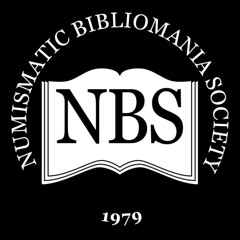 THURSDAY, AUGUST 16
THURSDAY, AUGUST 16
11:30 to 1:00 NBS Board Meeting (open to members), Room 120C
1:00 to 2:30 NBS Symposium, Room 120C Speaker: Roger Burdette on research at the National Archives.
FRIDAY, AUGUST 17
11:30 to 1:30 NBS General Meeting and Fundraising Auction, Room 117
Speaker: David Fanning on current state of numismatic literature market.
The Asylum Award winners will be announced.
All events take place in the Philadelphia Convention Center.
Send your photos (JPGs with captions) of NBS members and events from the ANA to
nbsasylum@gmail.com
by September 1 to be included in The Asylum Fall issue.
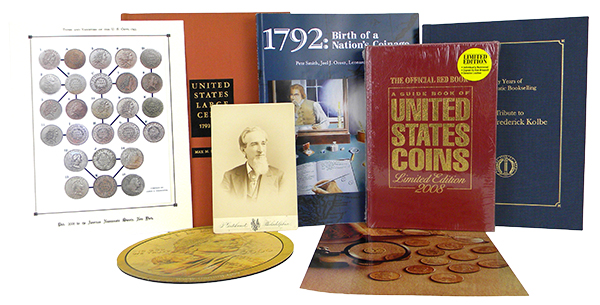
Each year at the ANA World’s Fair of Money, the Numismatic Bibliomania Society conducts a benefit auction to raise funds for the organization. All items sold are donated to the NBS by members and 100% of the proceeds go to the NBS treasury.
This year, we are trying to increase participation in the auction by distributing a catalogue of the sale to all NBS members so that members unable to attend in person can participate. You can download a PDF of the catalogue here .
Absentee bids should be sent to David Fanning at df@numislit.com by the end of Thursday, August 16. The sale will take place on Friday, August 17 as part of the NBS General Meeting, to be held in Room 117 of the Philadelphia Convention Center from 11:30 a.m. to 1:30 p.m. Please read the terms of sale before bidding.
Thank you for your support of the NBS!
There are some great lots in the sale at multiple pricepoints - literally something for everyone. If you can't attend the sale, please do review the catalog and enter some bids. -Editor
To download the catalogue, see:
https://gallery.mailchimp.com/5c68a72f4948c463818f613c2/files/9d01bd03-e538-433c-a4a0-9032ab8942a9/NBS_Auction_2018.pdf
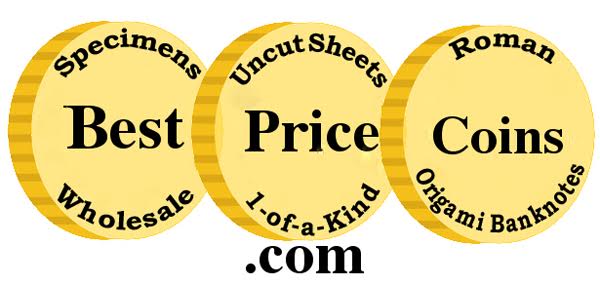
2018 ANS PUBLICATIONS CATALOGUE
The 2018 Publications Catalogue from the American Numismatic Society is now available. That's ANS Publications Director Andrew Reinhard pictured in ANS Photographer Alan Roche's great cover image - quite a balancing act!
Before tempting us with books for sale, the catalogue opens with a tease - a list of six upcoming books in the production pipeline. Next, the catalogue lists titles by category: The Americas, Modern, & U.S., The Ancient World, Renaissance & Medieval Studies, Medals, and Periodicals. Check it out! -Editor
Coins of the Ptolemaic Empire (Part I: Ptolemy I– Ptolemy IV, Volume I: Introduction and Precious Metal Catalogue) by CATHARINE C. LORBER
Coins of the Ptolemaic Empire (Part I: Ptolemy I–
Ptolemy IV, Volume II: Bronze Catalogue)
by CATHARINE C. LORBER
Connections, Communities, and Coinage: The System of
Coin Production in Southern Asia Minor, AD 218–276
by GEORGE WATSON
The Early Antigonids: Coinage, Money, and the Economy
by KATERINA PANAGOPOULOU
Festschrift in Honor of William E. Metcalf
NATHAN ELKINS and JANE EVANS, editors
White Gold: Studies in Early Electrum Coinage
UTE WARTENBERG and PETER VAN ALFEN, editors
with WOLFGANG FISCHER-BOSSERT,
HAIM GITLER, and KORAY KONUK
To read the complete catalogue, see:
http://numismatics.org/store/wp-content/uploads/sites/4/ANS-2018-Publications-Catalog.pdf
Andrew adds:
Cheers to Alan on engineering that cover image!
For more information, or to order, see:
http://numismatics.org/publications/
NEW BOOK: CATALOG OF PUERTO RICO STOCKS AND BONDS
A new book on the scripophily of Puerto Rico has been published. Thanks to E-Sylum ANA Edition reader Max Hensley submitted this article. Thanks! Max is the editor of Scripophily, the journal of the International Bond and Share Society (IBSS), where this will appear in the August issue. -Editor
 Our member Dennis De Jesús Rodríguez has self-published a paperback book on the scripophily of Puerto Rico. Congratulations on his endeavor! It is 127 pages on slick
paper with 390 color illustrations of over 400 stocks and bonds sorted by types and varieties and divided into 19 categories (railroads, autos, petroleum and gas, etc). The
language is Spanish but content is readily interpreted.
Our member Dennis De Jesús Rodríguez has self-published a paperback book on the scripophily of Puerto Rico. Congratulations on his endeavor! It is 127 pages on slick
paper with 390 color illustrations of over 400 stocks and bonds sorted by types and varieties and divided into 19 categories (railroads, autos, petroleum and gas, etc). The
language is Spanish but content is readily interpreted.
There is a general introduction in Spanish and English edited by Terry Cox. Price estimates (“VE” = price), printers and other information are given for each listing. Many of the listings are American Bank Note Co specimens. Dennis calls this “Part I” because he intends to publish a second part after he records more scripophily. He is happy to correspond at dennis12@coqui.net.
Dennis was born in New York in 1958 but his family returned to Puerto Rico when he was three. He has been collecting since he was 8 years old (stamps, coins, world banknotes). He thinks publishing his book is a “way of staying alive when I pass away”. He chose stocks and bonds because of the lack of reference books on the topic. His first Puerto Rico bond was from the Territorial and Agriculture Bank of Puerto Rico, purchased when he was 20 and “then I only wanted to frame it”.
He was greatly influenced by Terry Cox’ publications on North American rails, and effusively credits him for helping with and inspiring the Puerto Rico catalog. He also includes a nice “plug” for the IBSS.
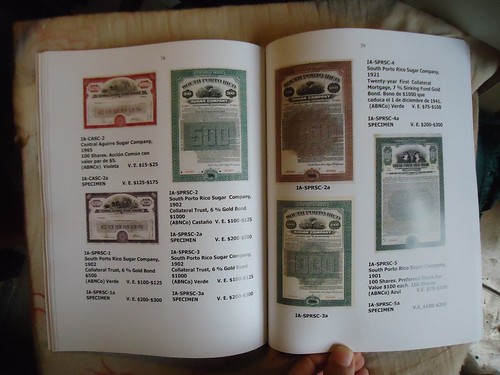
His main collecting started about 11 years ago. He purchased the Cox railroad catalog and began buying older and artistic certificates. He also says George LaBarre sent him a book on art in stocks and bonds as a gift. His book lists more than 200 of his own certificates. Others he has obtained from various sources, for example famous Puerto Rico collector Humberto Costa, now deceased, who let Dennis scan his collection - now owned by the Banco Popular. Otherwise he got little support in Puerto Rico, and most of the scans were from people wanting to sell him material. Also, eBay sellers did not reply to requests for better scans (similar to our experience trying to obtain scans for our eBay auction reports!). Some stocks were in poor condition but the author has done wonders with Paint.
His favorite certificate is on the book cover. He says he knows nothing about the company. Sadly, neither does this reviewer, who owns the only other one known. He designed the cover and lay-out, and had it printed at the University of Puerto Rico Mayagüez Campus near his home. 2-column printing was used to reduce cost. He wants to sell the first group of 25 before ordering more. So it is a very limited edition. It is available through eBay (where he thought he’d get the most exposure) at $65 plus shipping from Puerto Rico. He will consider a better price if you contact him directly at the email above.
Many people talk about publishing a book on their collection. Once again, Dennis has shown that it can be done.
For more information, or to order, see:
NEW!! CATALOG OF PUERTO RICO STOCKS AND BONDS (1813-present)
(https://www.ebay.com/itm/NEW-CATALOG-OF-PUERTO-RICO-STOCKS-AND-BONDS-1813-present/323345658288)
For more information on the International Bond and Share Society, see:
https://scripophily.org/

NEW BOOK: THE BONANZA KING
While not numismatic in the least, numismatists might be interested in a new biography of the man who hit it rich with the Comstock Lode, the source of silver for coinage for decades on end. The Wall Street Journal recently reviewed The Bonanza King: John Mackay and the Battle over the Greatest Riches in the American West. Here's an excerpt and link to the publisher's site. -Editor
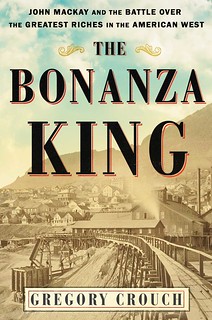 Mackey, 35, was suddenly a rich man. He married a local widowed seamstress and began betting his pot on more mines. In 1875 he and a handful of fellow Irish speculators formed a partnership that bought into a claim of dubious worth. More than 1,000 feet below the Nevada desert, however, it proved to be the mother of all silver strikes—the “Big Bonanza.” In the 20 years it took for the Comstock to play out, it earned the equivalent of $545 billion in today’s dollars. The Big Bonanza contributed a third of that fortune. Mackay, who only a few years earlier was earning $4 a day, was now pulling down $450,000 a month.
Mackey, 35, was suddenly a rich man. He married a local widowed seamstress and began betting his pot on more mines. In 1875 he and a handful of fellow Irish speculators formed a partnership that bought into a claim of dubious worth. More than 1,000 feet below the Nevada desert, however, it proved to be the mother of all silver strikes—the “Big Bonanza.” In the 20 years it took for the Comstock to play out, it earned the equivalent of $545 billion in today’s dollars. The Big Bonanza contributed a third of that fortune. Mackay, who only a few years earlier was earning $4 a day, was now pulling down $450,000 a month.
Gold and silver helped shape America’s destiny, but it didn’t seem to change Mackay much. He drove a one-horse buggy, preferred a dinner of corned beef and cabbage, and enjoyed an occasional evening at the theater. Roughly the second half of Mr. Crouch’s portrait is devoted to the ways in which Mackay put his fortune to use.
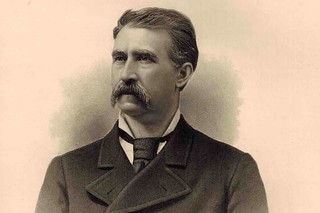 Mackay and his Irish partners established their own bank, built a railroad line over the mountains and financed a pipeline system that brought a flood of clean water from the Sierras to Virginia City. These projects had the added benefit of foiling the machinations of a crooked California banker named William Sharon, the Snidely Whiplash of Mr. Crouch’s tale. For years Sharon had been enriching himself on the backs of Comstock miners through insider trading and stock manipulation.
Mackay and his Irish partners established their own bank, built a railroad line over the mountains and financed a pipeline system that brought a flood of clean water from the Sierras to Virginia City. These projects had the added benefit of foiling the machinations of a crooked California banker named William Sharon, the Snidely Whiplash of Mr. Crouch’s tale. For years Sharon had been enriching himself on the backs of Comstock miners through insider trading and stock manipulation.
For more information, see:
The Bonanza King
John Mackay and the Battle over the Greatest Riches in the American West
(http://www.simonandschuster.com/books/The-Bonanza-King/Gregory-Crouch/9781501108198)
To read the complete article (subscription required), see:
‘The Bonanza King’ Review: The Man Who Hit the Mother Lode
(https://www.wsj.com/articles/the-bonanza-king-review-the-man-who-hit-the-mother-lode-1530838687)
NEW PERIODICAL: SUMMER 2018 BARBER JOURNAL
The Barber Coin Collectors' Society (BCCS) has published the latest edition of their journal. Editor John Frost kindly supplied the table of contents and cover image for this note. See two articles elsewhere in this issue for an article excerpt and information on a new group of photos of U.S. Mint engraver Charles Barber. -Editor
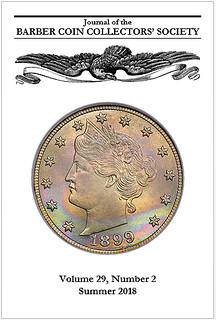 Table of Contents
Table of Contents
For more information on the Barber Coin Collectors' Society, see:
http://www.barbercoins.org/

BOOK REVIEW: PACIFIC COAST EXPO SO-CALLED DOLLARS
John and Nancy Wilson submitted this review of Jeff Shevlin's Pacific coast expositions So-Called Dollar collectors pocket price guide. Thank you! -Editor
So-Called Books, Carson City, NV, 2018
Reviewed by John and Nancy Wilson
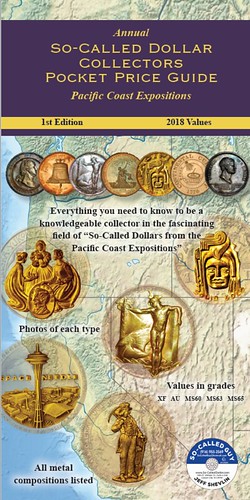 The Annual So-Called Dollar Collectors Pocket Price Guide, Pacific Coast Expositions, 1st Edition, by Jeff Shevlin, is a soft cover, 68-page reference which has all the types illustrated in full color. If you collect these So-
Called Dollars its very handy “pocket size” of about 4 ¼ by 8 3/8 inches, makes it very easy for you to carry with you. It is a price guide with SH (Shevlin) numbers cross-referenced with the So-Called Dollars 2nd Edition by Hibler and Kappen (Harold E. Hibler & Charles V. Kappen).
The Annual So-Called Dollar Collectors Pocket Price Guide, Pacific Coast Expositions, 1st Edition, by Jeff Shevlin, is a soft cover, 68-page reference which has all the types illustrated in full color. If you collect these So-
Called Dollars its very handy “pocket size” of about 4 ¼ by 8 3/8 inches, makes it very easy for you to carry with you. It is a price guide with SH (Shevlin) numbers cross-referenced with the So-Called Dollars 2nd Edition by Hibler and Kappen (Harold E. Hibler & Charles V. Kappen).
The first two pages cover the Introduction, Table of Contents and the Rarity Guide which covers R-1 – Over 5000 known to R-10 Unique 1 known. The reference covers the eight Pacific Coast expositions held between 1894 and 1962.
The remainder of the book lists all the medals issued by the following eight expositions: 1894 California Midwinter International Exposition, 1905 Lewis and Clark Centennial Exposition, 1909 Alaskan-Yukon-Pacific Exposition, 1915 Panama-Pacific Exposition, 1915-16 Panama-California Exposition. 1935-36 California Pacific International Exposition, 1939-40 Golden Gate International Exposition and 1962 Seattle World’s Fair Exposition. Each medal gives the rarity, metal, and prices for either five or six grades along with a color picture of both sides of the medal. SH numbers cross-reference the HK numbers at the end of the book. All 152 medals are covered.
We have known the author for many years and know the love and dedication he has for not only the Pacific Coast Exposition Medals listed in this reference but all the So–Called Dollars that have ever been issued.
For information on purchasing the book contact Jeff Shevlin, The So-Called Guy, 1894 E. William St. Suite 4-240, Carson City, NV 89701. Email: SoCalledGuy@hotmail.com or see
http://www.so-calleddollar.com/
.
The cost of this 68 page annual price list is $19.95 plus shipping of $4.50. He also has another complete So-Called Dollar Book with 320 pages priced at $59.95 and a Deluxe Limited Edition book with a Limited Edition Commemorative Encased Commemorative Medal priced at $149.95. (We have not seen either of the last two books).
To read the earlier E-Sylum article, see:
NEW BOOK: PACIFIC COAST EXPO SO-CALLED DOLLARS
(http://www.coinbooks.org/v21/esylum_v21n25a04.html)
NUMISCADERO IN THE SPANISH EMPIRE ARCHIVES
Author Gary Beals of Segovia, Spain submitted this update on the journey of his latest book, Numiscadero. -Editor
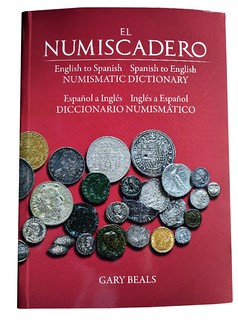 It is an honor to report that a copy of my Spanish-English Numismatic Dictionary Numiscadero is now in Spain’s Archivo General de Indias or "General Archive of the Indies," in Sevilla. This is the repository of extremely valuable archival documents dealing with the history of Spain’s empire in the Americas and the Philippines. For example, its resources were used when treasure hunters along Florida’s coast went in search of sunken galleons laden with gold and silver coins, jewelry and ingots. The building is a UNESCO World Heritage Site.
It is an honor to report that a copy of my Spanish-English Numismatic Dictionary Numiscadero is now in Spain’s Archivo General de Indias or "General Archive of the Indies," in Sevilla. This is the repository of extremely valuable archival documents dealing with the history of Spain’s empire in the Americas and the Philippines. For example, its resources were used when treasure hunters along Florida’s coast went in search of sunken galleons laden with gold and silver coins, jewelry and ingots. The building is a UNESCO World Heritage Site.
In 1785, Spain’s King Carlos III ordered all documents related to the Americas which had been dispersed among various archives to be housed there. The hope was that Spanish historians would take up the history of Spain's colonial empire.
The archives hold material from the first conquistadores to the sad date of 1898 when Spain lost the last of its new world colonies to the USA. Included are the Papal bull that divided the Americas between Spain and Portugal, a Christopher Columbus journal, maps of colonial cities, and the ordinary archives that reveal the month-to-month workings of the whole vast colonial machinery, which have been mined by many historians in the last two centuries.
Oh, yes — How do you get your book into the Archivo? You take a copy to the librarian, with your compliments. Which is just what I did recently while in Sevilla. So if you have a numismatic work that speaks to aspects of the 500+ year history of Spain in the Americas, I am sure it would be well received at the archives.
Congratulations. Great idea! -Editor
To read the earlier E-Sylum articles, see:
NEW BOOK: EL NUMISCADERO
(http://www.coinbooks.org/v20/esylum_v20n03a02.html)
BOOK REVIEW: EL NUMISCADERO
(http://www.coinbooks.org/v20/esylum_v20n20a05.html)

QUERY: SAN FRANCISCO COMMITTEE OF VIGILANCE MEDAL
Newman Numismatic Portal Project Coordinator Len Augsburger has a question for E-Sylum readers. -Editor
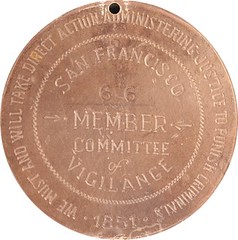

A Newman Portal user this week forwarded photos of what appears to be a hand-engraved, numbered 1851 medal from the San Francisco Committee of Vigilance. Composition analysis indicates the piece is sterling silver. A check of the Newman Portal for “Committee of Vigilance” yields a few clues. Vigilante associations were common in the 19th century, and were formed in San Francisco in 1851 and again in 1856.
The 1856 committee is well-documented, and the Huntington Library in San Marino, CA holds 2,500 applications for the group. This committee struck a member’s medal, and the Ford XX catalog (lots 3283-3285) includes a 13-page article on the topic. These committees were no mere ceremony. The June 1933 &mbsp;Numismatist summarized the activities of the earlier 1851 committee – 4 hanged, 1 whipped, 14 deported, 1 ordered to leave the state, 1 handed over to the authorities, and 41 discharged.
The three examples of the 1856 medals in the Ford sale sold at the $25k-$30k level. Is this hand-engraved 1851 piece an early, crude, prototype for the later struck medals? We checked with a California expert on 19th century American medals, who believes the piece to be an outright fantasy. Do E-Sylum readers have any further opinions?
Link to Ford XX sale (Stack’s, 10/2007) on Newman Portal:
https://nnp.wustl.edu/library/auctionlots?AucCoId=3&AuctionId=515272&page=211

WHAT'S NEXT FOR THE CONTINENTAL DOLLAR?
In a Mint New Blog article published July 18, 2018, Dave Bowers mentions recent research on the Continental Dollar coins and invites readers to search for citations of them published before 1780. -Editor

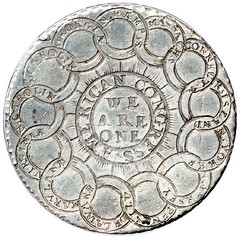
In recent years, several researchers have delved into the coin deeply, now with the Internet making searches easier. It turns out that not a single reference in print has been found about metal 1776 Continental dollars in circulation in America at that time or any time later! I found this amazing. The more I read, the more I learned. It seems that electronic treasure detectorists have found countless metal buttons, coins, and the like in various places in the United States from that era, but not a single metal Continental dollar. However, such coins were for sale as medals in London before 1790! There is much more fascinating new information.
If you would like chapter and verse on some of this research, much is on the Internet site eSylum. Christopher McDowell, editor of the Journal of Early Numismatics (new name for the Colonial Newsletter published by the American Numismatic Society) is gathering all of the new finds and will be preparing an essay on the coin.
Hope springs eternal as they say, and if any Mint News Blog readers can find any citations for pewter (or tin) 1776 Continental dollars published before 1780, let me know!
To read the complete article, see:
Bowers on collecting: The 1776 Continental Currency dollar revisited
(http://mintnewsblog.com/bowers-on-collecting-the-1776-continental-currency-dollar-revisited/)
Dave can be reached at qdbarchive@metrocast.net . I'll look forward to McDowell's journal article. Meanwhile, here's another possible clue offered by an E-Sylum reader. -Editor
Ed Hohertz writes:
The challenge presented in NEXT STEPS FOR CONTINENTAL DOLLAR RESEARCH in the E-Sylum issue of July 15th was to find a die maker with the initials of E.G. who may have been working in the 1780’s in England or Europe. I turned to my copy of Erkla¨rung der Abku¨rzungen auf Mu¨nzen der neueren Zeit, des Mittelalters und des Alterums, by Schlickeysen. This book has explanations of the abbreviations used on coins from the Middle Ages to the mid 1800’s. On page 129 was the entry E.G. und E.G.F. and the mintmaster’s name – Elias Gervais, along with where he worked and dates.
He was a diecutter / mintmaster in Cologne from 1750-1777. The initials he used were EG and EG·F . Examples of his initials can be seen on the Cologne thalers of 1759 (EG·F Davenport 2175), 1762 (EG Davenport 2177), and of 1777 (EG Davenport 2181). His initials also appear on other coins of Cologne and Trier.
This led to looking at images of the German coins with the E.G. initials and searching the internet for information about this mintmaster. None of the coins with E.G.F. had the word the F. stood for. A Google search turned up the nomisma.org page that equated the F. in E.G.F. with FECIT (meaning: he made it), as is found on the Continental Dollar. F. was used after the initials of other mint-masters but none of them started with E.G.
Thanks. The initials alone prove nothing of course, but this seems like an avenue worth exploring. Here's the nomisma.org entry for Elias Gervais. -Editor
Die-cutter who lived mainly in Neuwied, a city in Germany, but did a lot of work for Trier and later Cologne. His monograms are EG or EG F(fecit) for Neuwied (1750-1775), EG for Bonn (1759-1766), G for Poppelsdorff (1776-1777) and EG for Koblenz (1764-1766) and GF. Lit.: Alfred Noss, Die Münzen der Erzbischöfe von Köln 1547-1794 (1925) pp. 380, 416. (en)
Above is an example of the Continental Dollar with its E.G. FECIT inscription. Here are some images to get the ball rolling. First is the Felicitas Britannia et America medal pictured last week, followed by some coins attributed to Elias Gervais. -Editor
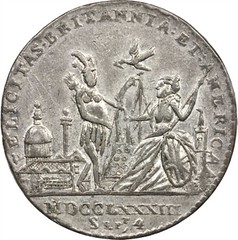

Betts-614 Felicitas Britannia et America medal
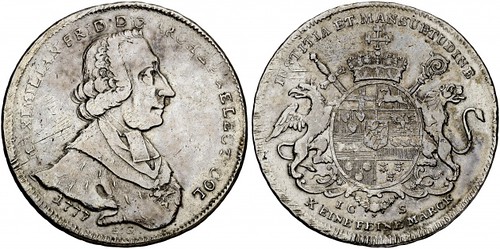
1777 Maximilian Friedrich von Königsegg taler

1766 Maximilian Friedrich von Königsegg 1/4 taler
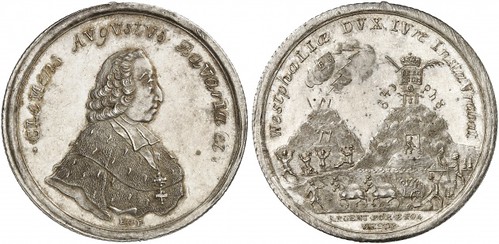
1759 Clemens August of Bavaria Ausbünstaler
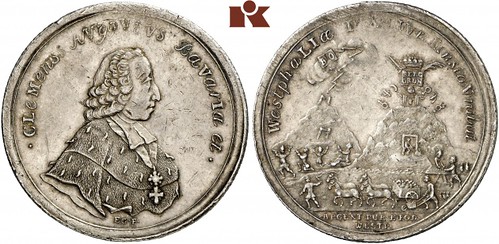
1759 Clemens August of Bavaria Ausbünstaler (another example)
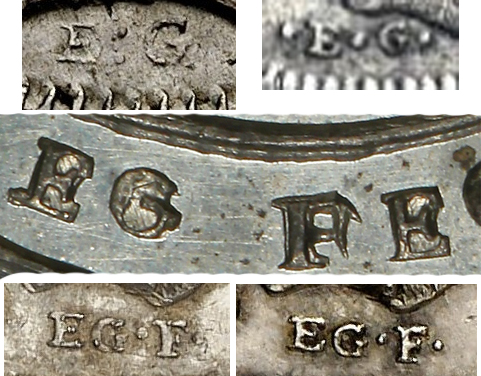
Ed adds:
I made the compilation above which shows the initials from each photo above placed above and below the initials from the CONTINENTAL CURRENCY coin. Note the styles of the letters are very similar, but the letters are not duplicates of each other.
I also looked in Forrer's Biographical Dictionary of Medallists, this time looking at volume VII – supplement from 1923. Under Gervais, Elias it states the following:
“The initials E.G. occur on a piece of American Continental Currency, dated 1776, which may be by this engraver (E.G. FECIT), …”
There is nothing new about trying to connect this medallist with the initials E.G. on the piece of American Continental Currency, as it was tried in 1923!
I looked on the Newman Numismatic Portal for more information on Gervais, but only found the Forrer reference. He apparently hadn't been mentioned as a possible connection to the Continental Dollar elsewhere, at least not in American numismatic literature. Just be aware that contrary to popular belief the portal doesn't contain everything ever written in American numismatics - it's still far from it and will never be complete. It's possible other references will turn up someday.
What do readers think? Similar engraving styles may or may not mean anything, but linking letter punches would be significant. And can anyone find another E.G. meeting the criteria? Thanks, everyone. -Editor
To read the earlier E-Sylum articles, see:
GOLDSTEIN AND MCCARTHY ON THE CONTINENTAL DOLLAR
(http://www.coinbooks.org/v21/esylum_v21n21a21.html)
NEXT STEPS FOR CONTINENTAL DOLLAR RESEARCH
(http://www.coinbooks.org/v21/esylum_v21n28a19.html)

WHAT'S NEXT FOR THE RARE COIN BUSINESS?
E-Sylum supporter Harry Laibstain's July 2918 email newsletter In The Loupe opens with good news for our hobby - the first two articles address the influx of new young collectors and dealers into the U.S. coin hobby. With permission, we're republishing these here. The image is my addition - we love newbies (a.k.a. noobs). -Editor
When a Hobby Becomes a Big Business
Summer is traditionally a slower time for the coin market. This year is no exception. However, the market is benefitting from new players in many areas. Signing onto these large regional shows like TNA and Summer Fun we are getting a chance to meet these new collectors. It’s very encouraging to see people participating in the hobby continuing the evolution that helps build new foundations.
While most people understand what a coin collector does and what being a coin dealer is, they don’t usually know the details. The coin business as we know it is a dynamic business. It includes the obvious, buying and selling coins but also grading, valuation, auctioning and price histories.
Thanks to the Registry we have competition and a way for collectors to display their sets. The online presence of rare coins is mind-boggling with major platforms like eBay and Collectors Corner acting as mirror images of dealer websites. Auction companies are publishing their offerings on a weekly or monthly basis and the grading houses featuring images and other researchable databases regarding the now millions of coins and billions of value they have certified.
As a kid collector of the sixties, I could never have imagined what the coin business would become or that I would become part of it. From talking with dealers and collectors many of our journeys have been similar. It is this shared knowledge of a large but intimate group that makes it so alluring.
New collectors and New Dealers
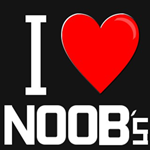 The one thing that sticks out the most for me in the last year or two are the new young dealers on the floor at major coin shows. All industries experience a generational changing of the guard. However, for many years the business side of rare coins seemed to have a dearth of young dealers. There were lots of reasons put forward for their absence. My favorite was the capital-intensive nature of the business. Young participants just didn’t have the money to play and the reality is the coin business requires significant capital. Still, I wondered where were the young people, who would help the business evolve for another generation, coming from. Then, Viola, they began to turn up until there was a mini-revolution afoot.
The one thing that sticks out the most for me in the last year or two are the new young dealers on the floor at major coin shows. All industries experience a generational changing of the guard. However, for many years the business side of rare coins seemed to have a dearth of young dealers. There were lots of reasons put forward for their absence. My favorite was the capital-intensive nature of the business. Young participants just didn’t have the money to play and the reality is the coin business requires significant capital. Still, I wondered where were the young people, who would help the business evolve for another generation, coming from. Then, Viola, they began to turn up until there was a mini-revolution afoot.
In some cases they had loosely attached themselves to nationally known dealers, they came from shops across the country, they came from ANA summer seminars and they peeled off from larger firms and auction houses to set up shop on their own. Most of the young dealers I know are participating largely in the wholesale end of the business. This means they are looking for a quicker turnover which reflects the capital needs. With young eyes and youthful enthusiasm, I predict their ranks will begin to step into more direct activity with collectors. As they discover the value of long-term relationships and building a business that pays dividends I think you will see more websites and participation at shows behind the table.
If any of the young dealers are reading my newsletter this is an important message. Act now and you can get ahead of your peers. Take tables or share them with other dealers. Build your website offering and collector traffic. Make your name known to more than the dealers you buy and sell with at shows. The time to build your foundation is now.
Are you one of these newer dealers or collectors? Whether you're reading this E-Sylum in Sunday's night's email, the Wednesday ANA edition or on the web, please let us hear from you. What has drawn you to the hobby? What keeps you engaged? How can we help? All of our readers can help by spreading the word to these (relative) newcomers about great online resources like (ahem) The E-Sylum and (of course!) the Newman Numismatic Portal. -Editor
To visit the Harry Laibstain Rare Coins web site, see:
http://hlrc.com/
To subscribe to The E-Sylum, see:
https://lists.capalon.com/lists/listinfo/esylum
To visit the Newman Numismatic Portal, see:
https://nnp.wustl.edu/
MEDAL COLLECTING INTEREST SURGES

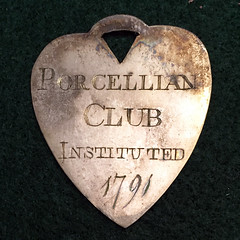
Massachusetts Historical Society Collection
Last week’s excerpt from the Mint News Blog by Dave Bowers on collecting medals was a great reminder of some of the main reasons folks collect medals – the artistic quality, workmanship, and collecting value. As Dave noted, “an extensive collection of medals can be formed for a low cost.”
But this was not always the case. In the nineteenth century, some medals brought as much as or more than the most desirable American rare coins. In the Chapmans’ 1882 Bushnell sale, for example, a set of the Washington Seasons Medals sold for $150 and a Diplomatic Medal brought $50, compared with nice examples of an NE Shilling at $51, a 1793 chain cent at $41, a 1794 silver dollar at $81, and even Bushnell’s Brasher Doubloon at a relatively reasonable $505. While these prices may seem like a pittance today, keep in mind that in 1880 an entire 60-hour work week earned a manual laborer about $8 and a skilled blacksmith or carpenter about $11.
Interest in medals seems to be broadly returning and, as Dave noted, is growing rapidly. Membership in the Medal Collectors of America (www.medalcollectors.org) is now at an all-time high. I believe the internet has a lot to do with this resurgence, as it’s now much easier to research previously obscure pieces and to collect on an almost industrial scale using eBay and various auction houses’ online bidding platforms. These tools are available for coins too, of course, but have disproportionately impacted medals, of which there are far more different types and with historically much less printed reference material.
For example, I’ve recently been researching the early membership and award medals used by secret societies at various American colleges, such as the Porcellian Club medal above. I used to see these at coin shows and they were always inexpensive because nobody (including me) knew what most of them were. But with various online tools and databases, it’s now possible to decode most of them and understand their historical and social significance. I’ll give a brief presentation on some of what I’ve found at the MCA meeting on Thursday, August 16 at the ANA convention, in “Their Secrets Revealed! Early American College Secret Society Medals”.
There will be other opportunities to learn more about medals at the ANA convention, such as the TAMS “Meet the Experts: A Symposium on Tokens and Medals” mentioned in last week’s E-Sylum and Bob Fritsch’s Money Talks presentation “The Lure and Lore of Medals”, both of which are also scheduled for that Thursday.
And if you get intrigued by any of those events, please consider attending “Art and Memory: The Role of Medals”, in Boston on Saturday, November 10. The Medal Collectors of America and the Massachusetts Historical Society have teamed up to organize an unprecedented conference on medals and medal collecting, featuring a full day of presentations and discussion around a range of topics related to collecting and enjoying medals, with plenty of time around the edges for social enjoyment and dinner afterward. For more information and registration details, see https://www.medalcollectors.org/news/events/mca-conference-2018.
This is another very encouraging development for our hobby, and a good time to point out the the Newman Numismatic Portal is NOT the only place to research numismatic items online. It's a fantastic place to start, in order to learn what is known and been published before, but to make new discoveries by definition one must look elsewhere. It would never make sense to pull troves of non-numismatic sources into the portal, but that's where researchers must go - to newspapers, to non-numismatic books and publications, diaries, archives and other primary sources. Happy hunting! There are many treasures to be found!
Note that to reserve a place in the Boston conference you MUST register online with the Massachusetts Historical Society and space is limited, so you should register soon. Here's the link: www.masshist.org/medals . -Editor
To read the earlier E-Sylum article, see:
BOWERS ON COLLECTING MEDALS
(http://www.coinbooks.org/v21/esylum_v21n28a29.html)
THE BOOK BAZARRE
2018 NLG SYMPOSIUM: ATTRACTING COLLECTORS ONLINE
The Numismatic Literary Guild (NLG) is a separate organization from ours, the Numismatic Bibliomania Society (NBS). But we share a love of the numismatic hobby, numismatic books, and numismatic information of all kinds. The NLG press release describes their upcoming Symposium, which will focus on attracting new collectors online. -Editor
 The Numismatic Literary Guild (www.NLGonline.org), a nonprofit organization composed of hobby writers, editors and
content producers, will conduct its 2018 NLG Symposium from 10 am to 11 am, Thursday, August 16, at the American Numismatic Association World’s Fair of Money (www.WorldsFairofMoney.com) in Philadelphia, Pennsylvania. The group’s annual dinner and awards ceremony, known as “The Bash,” will be held that evening.
The Numismatic Literary Guild (www.NLGonline.org), a nonprofit organization composed of hobby writers, editors and
content producers, will conduct its 2018 NLG Symposium from 10 am to 11 am, Thursday, August 16, at the American Numismatic Association World’s Fair of Money (www.WorldsFairofMoney.com) in Philadelphia, Pennsylvania. The group’s annual dinner and awards ceremony, known as “The Bash,” will be held that evening.
The symposium topic will be “Cultivating New Collectors with Online Blogs and Publicity,” and the symposium will be open to the public.
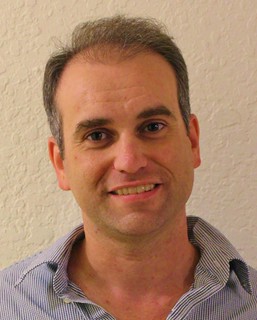
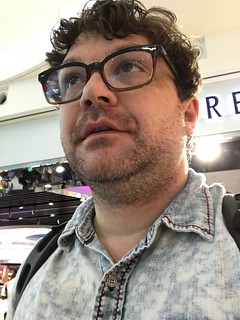
Joshua McMorrow-Hernandez and Charles Morgan
The award-winning speakers include blogger, author and CDN Publishing Editor Joshua McMorrow-Hernandez; CoinWeek Editor and podcast host Charles Morgan; NLG Acting Executive Director and former journalist and broadcaster Donn Pearlman; and blogger, author and former ANA Vice President Scott A. Travers.
“The internet has become an absolutely crucial part of daily communications for nearly everyone with WiFi access. Whether it’s using a tabletop computer or a small smartphone, the numismatic hobby as a whole must do more online to educate current collectors and attract new people to the hobby,” said Pearlman. “We’ll be discussing ideas at the symposium and certainly welcome participation by all collectors, dealers and the public.”
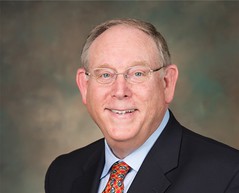
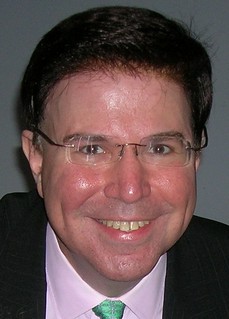
Donn Pearlman and Scott Travers
The one-hour symposium will be held in Room 117 of the Pennsylvania Convention Center, 1101 Arch St. in Philadelphia’s Center City, site of the ANA convention.
Now celebrating its 50 th anniversary, the Numismatic Literary Guild conducts an annual symposium and a separate awards ceremony (“The Bash”) at each ANA summer convention. Open to the public, the 2018 Bash will begin at 7:30 pm on Thursday, August 16, in Liberty Ballroom A&B of the Philadelphia Marriott Hotel, 1201 Market St. Admission is $15 at the door and includes a buffet dinner and dessert.
Sponsors and underwriters for the NLG Bash and awards are: Certified Acceptance Corporation, CDN Publishing, CoinWeek.com, Eric P. Newman Numismatic Education Society, Michael Fuljenz, Heritage Auctions, Ira and Larry Goldberg, Numismatic Guaranty Corporation, Professional Coin Grading Service and Stack's Bowers Galleries.
For information about joining the NLG, visit www.nlgonline.org/membership.
WORLD COIN GAMES DEBUT IN VIRGINIA
In his May 20, 2018 article, Gary Beals of Segovia, Spain introduced his idea for World Coin Games. -Editor
Gary wrote:
Here is a project I have been working on. I think those buckets of coins many dealers have could be part of the answer - games played with coins in a way that sparks a desire to learn more and have fun with friends.
Gary provided some detailed instructions with rules and gameboards. See the earlier E-Sylum article for more information. Yesterday, at the Annandale, VA Coin Show my friend Tom Kays and I ran our first World Coin Games, letting three teams compete for rewards and bragging rights.
I thought I was getting there early but Tom already had the room nearly set up. There was still work to do though, as we set up piles of coins on each table and set out more donated material on the giveaway table. Show organizer Wayne Herndon arranged for a larger room for us, and it worked very well.
Our fellow Nummis Nova member Jon Radel arrived to help as did Fairfax Coin Club member John Hutcheson. But Tom had done all the preparation and the lion's share of the work, and deserves all the credit for the event's success. The kids and parents all had a great time, and the din in the room was almost deafening as conversations about coins erupted in every corner. Here are some photos. -Editor
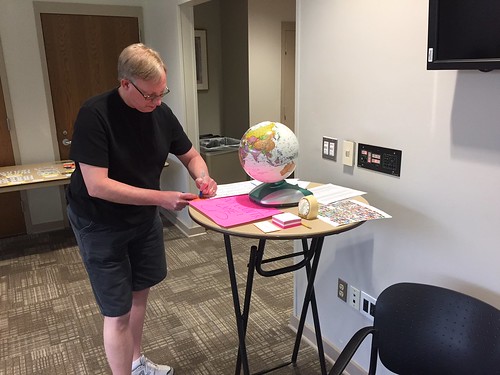
Wayne at the Trophy Table (Tom Kays photo)

Yellow team set up (Tom Kays photo)
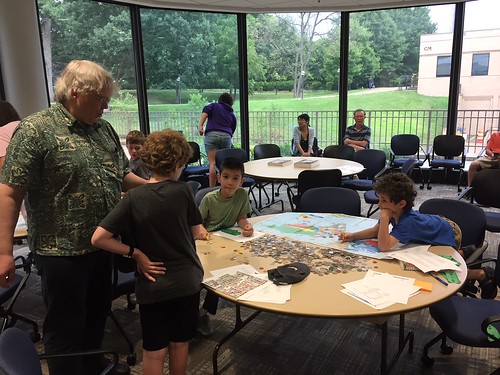
Jon Radel answering questions (Tom Kays photo)
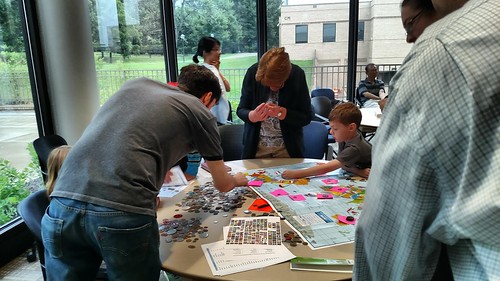
Red team at work (Wayne Homren photo)
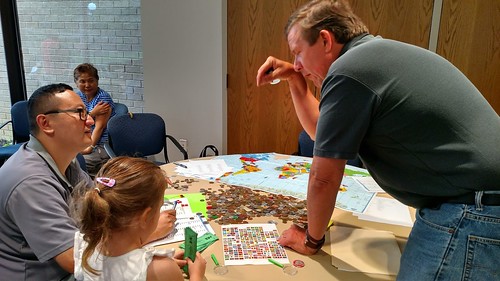
John Hutcheson assisting at Green table (Wayne Homren photo)

Yellow Team takes the global prize (Tom Kays photo)
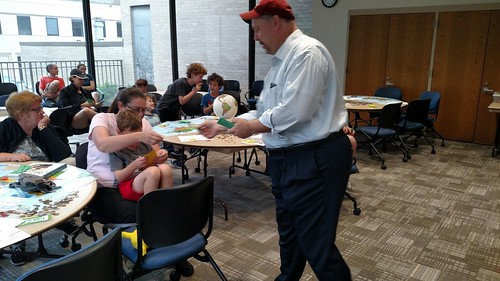
Tom Kays awarding prizes (Wayne Homren photo)
As it happened, we had a number of newcomers and the audience skewed quite young. It wasn't a textbook implementation of Gary's concept, but it was a great start for us.
Tom Kays writes:
What we did right was to have coins from over 170 countries seeded into the mix, advance set up with world maps for each team, magnifying glasses, lists of counties by continent, post-it notes, pencils, a timer with bell, globe, tooth pick flags of many nations, reference books, and team tables ready to go with a pile of coins ready to be sorted.
We planned up to five runs, of from five to ten minutes each, to have the kids find one coin from each continent, to match coins with flags, to find ten coins for a single continent chosen at random from cards, and further runs not played, to find coins not issued by any of the 197 independent countries, (think dependent territories) and to find coins from the two most distant points on the globe. Doing all would have taken an hour for our three teams of five kids, but we cut it short to stay within 40 minutes.
We allowed parents and helper Numismatists to answer questions, and had a hard time keeping parents with younger kids from running the show for some teams. I was most impressed by Red Team who, without instructions, had guessed what was about to happen and had opened their map and already found coins for five of the seven continents by the time the game started. We had them dump those coins back into the pile to restart that first task at the same time as the Yellow and Green teams.
The first to finish, or the team with most matching coins took the honors for each task with the grand prize winners taking the globe as a trophy, (for the remaining duration of the event.) I think Nummis Nova can recommend this game as a fun and fast-paced, cooperative/competitive event that would tie-in nicely with the World Cup or Olympics. Kids may not be taught geography in this age of iPhones, but I saw no one using a phone or game in boredom while the timer was ticking. That is a success.
Gary's working hard to get local publicity for his events. He provided this image of an article in his local paper about the coin games. Great job. -Editor
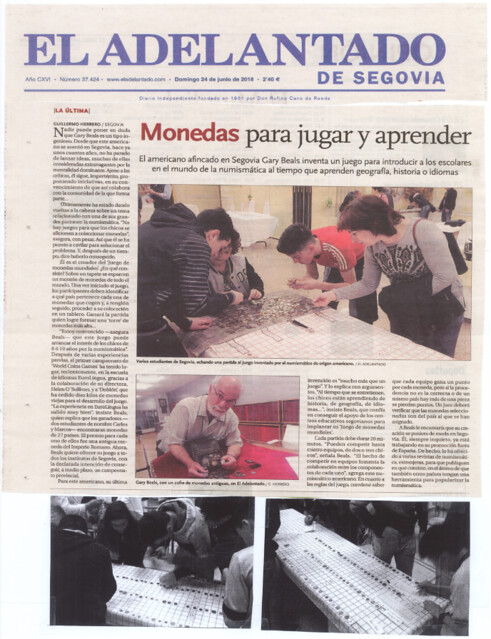
Gary adds:
I'll get back to it when school starts up -- pit the high schools against each other -- then challenge other towns.
Good luck! We won't challenge the World Cup for eyeballs, but I think this idea has legs. Who will hold the next one? -Editor
To read the earlier E-Sylum article, see:
INTRODUCING: WORLD COIN GAMES
(http://www.coinbooks.org/v21/esylum_v21n20a27.html)
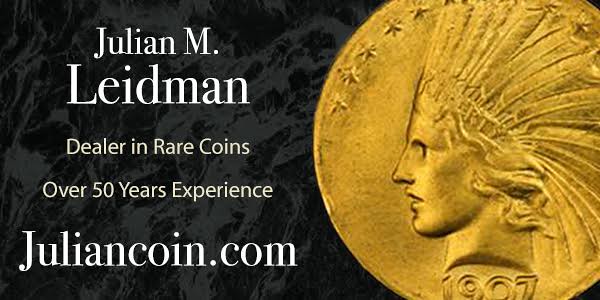
ANCIENT GREEK "COIN" FOUND IN ILLINOIS IN 1882
Bob Leonard submitted these thoughts on the 1882 discovery of an ancient coin in Illinois. Thanks. -Editor
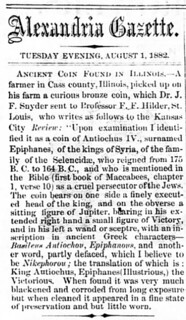 While on a trip East to attend a destination wedding, I stopped at an antique mall and bought a copy of The Books of Charles Fort. These are a compilation of unexplainable events written in a unique style. On p. 149 of The Book of the Damned, Fort mentions the discovery of "a curious bronze coin" attributed by Prof. F.F. Hilder of St. Louis to Antiochus IV Epiphanes of Syria, 175-164 B.C., on a farm in Cass County, Illinois, in 1882. There is a description. Fort's source for this item is the Scientific American for June 17, 1882, p. 382. The story was also picked up by a number of newspapers, among them the Alexandria Gazette (of Virginia) for Aug. 1, 1882, p. 4.
While on a trip East to attend a destination wedding, I stopped at an antique mall and bought a copy of The Books of Charles Fort. These are a compilation of unexplainable events written in a unique style. On p. 149 of The Book of the Damned, Fort mentions the discovery of "a curious bronze coin" attributed by Prof. F.F. Hilder of St. Louis to Antiochus IV Epiphanes of Syria, 175-164 B.C., on a farm in Cass County, Illinois, in 1882. There is a description. Fort's source for this item is the Scientific American for June 17, 1882, p. 382. The story was also picked up by a number of newspapers, among them the Alexandria Gazette (of Virginia) for Aug. 1, 1882, p. 4.
Now there are several explanations for this discovery:
(1) the Seleucids discovered America before Columbus, and penetrated as far as Illinois.
(2) One of the U.S.'s early collectors of ancient coins took up farming in Illinois and lost it there.
(3) It's a copy.
Surely the last explanation is correct. As noted in the Scientific American story, Antiochus IV is mentioned in the first book of Maccabees, chapter 1, verse 10, "as a cruel persecutor of the Jews." In the latter part of the 19th century, salesmen for large family Bibles sometimes offered replicas of ancient coins (illustrated in the Bible) as premiums, and such copies have turned up in odd places to bedevil researchers. I have not seen a reference to coins of Antiochus IV being imitated, however.
Reader comments invited!
Interesting mystery! (2) and (3) are both certainly possible. Who knows? What do readers think? -Editor
To read the complete article, see:
https://www.newspapers.com/image/347409143/?terms=coin%2BSnyder%2BHilder
WASHINGTON INAUGURAL BUTTONS FOUND
Anne Bentley of the Massachusetts Historical Society forwarded this article about a metal detectorist's early American discovery in New Jersey. Thank you. Great find! -Editor

The 220-year-old button sifted from New Jersey dirt was the find of a lifetime.
Treasure hunter Michael Reinheimer of Stroudsburg had his headphones on and was in the groove, sweeping the land with his metal detector, so he hoped his friend Rick Pressl had a good reason for sneaking up and startling him.
“He said you’re not going to believe what I just found,” Reinheimer recalled.
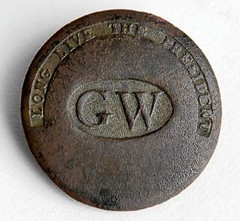 Pressl placed a 1789 George Washington inaugural button in his hand.
Pressl placed a 1789 George Washington inaugural button in his hand.
“My eyes just about fell to the ground. I knew right away what it was from research,” Reinheimer said. “It is the holy grail of buttons. They are so rare.”
The two friends are hobbyist metal detectors. They gained permission to search the Schiff Natural Lands Trust in Mendham, N.J., in late 2007 and have been working the property since then. It was just this summer when four of the rare inaugural buttons were pulled from the ground.
Authenticated by the U.S. Department of Interior, the four buttons are the second set of the same size ever to be found. The other set was also found in northern New Jersey, according to Pressl.
At the time of the nation’s first inauguration, military officers wore the buttons to show support for Washington. Only the elite could afford the buttons, which cost about six months’ salary. Today, they are even more valuable, especially as a set. Early estimates set the value near $7,500 each.
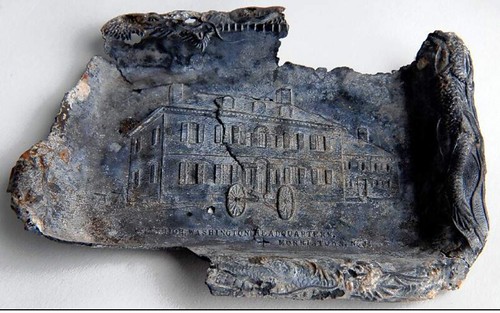
A tray with George Washington’s headquarters in Morristown, N.J.
Congratulations to the finders! Be sure to read the complete article online for more information on the detective work that went into locating a likely spot to dig for early American artifacts. -Editor
To read the complete article, see:
Treasure hunters discover rare George Washington buttons
(http://www.poconorecord.com/article/20090920/NEWS/909200330)
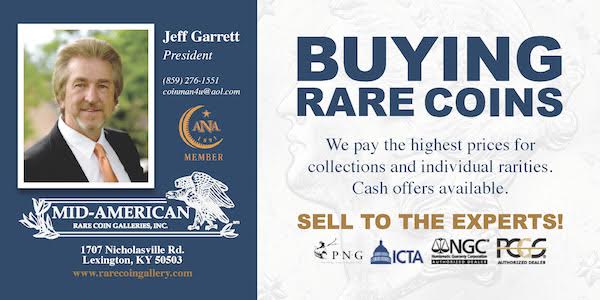
NOTES FROM E-SYLUM READERS: JULY 22, 2018
More on Fake Sycee-Like Ingots
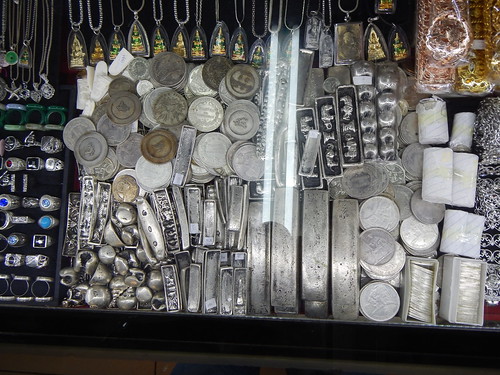
Howard Daniel writes:
The above picture shows a case in a Southeast Asian jewelry store selling replica numismatic pieces from several countries and colonies. This case does not have sycee from China but others will have them. There are several Vietnamese 10 Lang (Ounce) silver ingot in it. If you ask the owner if they have authentic pieces, most will tell you they are authentic, but there are also many who will go to their safe and pull a few out to offer you. The authentic pieces will not be cheap but very close to retail in the numismatic markets.
Many years ago, one or more dealers in Bangkok countermarked authentic Vietnamese 10 Lang silver ingots with emperor names and dates to enhance their values. The poor calligraphy can usually identify these countermarks. Many of them are often sold in major auctions and price lists because the sellers cannot tell if the calligraphy was done by a literate person.
I am often asked to authenticate the pieces shown in the case and told they were guaranteed to be authentic by the seller, or they came from an "old" collection. There are ingots of good silver in the case because some locals will buy them to store their wealth. But there are also white metal, silver wash and plated over copper (or other metals) ingots which are sold to the tourists. The tourists usually think the seller is uninformed of the ingots' values and greed takes over their judgement.
Thanks. Fakes abound, and everyone needs to be cautious. -Editor
To read the earlier E-Sylum article, see:
FAKE CHINESE SYCEE STAMPS
(http://www.coinbooks.org/v21/esylum_v21n28a09.html)
Query: Book Cutting Identification Sought
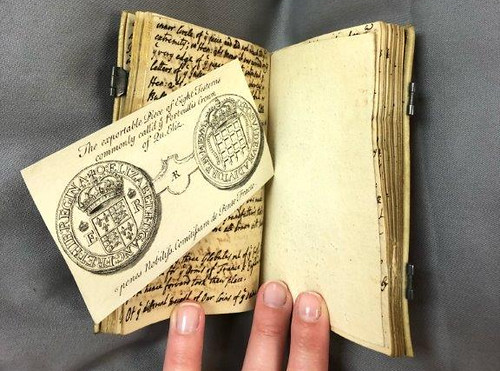
David Pickup writes:
Could any of your readers identify where the cutting in this book comes from please? It is loose in an old collector's notebook. I think it might be Stephen Leake's An Historical Account of English Money. It might help date the book.
Great question - can anyone help? -Editor
Query: Were Treasury Vignette Books Sold By Subscription?
Mike Niebruegge writes:
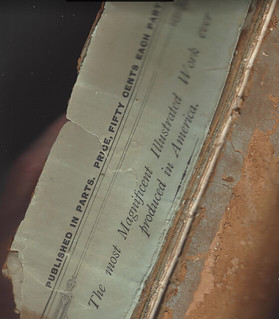 I recently acquired a U.S. Treasury Vignette Book with a damaged unhinged spine. In examining the pieces I found a paper bound in behind the spine that says: Published in Parts. Price, Fifty Cents Each Part. I have attached a scan; this is on the spine, facing the book. Has anyone ever seen or heard of this? It suggests that one could have bought the parts and assembled a Vignette book (assuming it is actually part of the original book). Thanks for any thoughts about this.
I recently acquired a U.S. Treasury Vignette Book with a damaged unhinged spine. In examining the pieces I found a paper bound in behind the spine that says: Published in Parts. Price, Fifty Cents Each Part. I have attached a scan; this is on the spine, facing the book. Has anyone ever seen or heard of this? It suggests that one could have bought the parts and assembled a Vignette book (assuming it is actually part of the original book). Thanks for any thoughts about this.
Well, as a longtime bibliophile I know that scrap paper and other book parts are often pressed into service as filler when binding other books - economical sausage-making at its best. So I wouldn't have been surprised to learn this fragment had nothing to do with the book at hand.
To find a possible answer, I entered the exact phrase "the most magnificent illustrated work ever produced in America" into our old friend Dr. Google, and found what looks like a likely match: Picturesque America, Or the Land We Live In, a large two-volume edition by William Cullen Bryant published by D. Appleton and Company in 1872 and 1874. It was published and delivered as a subscription; semi-monthly parts were sent out to subscribers.
If Mike's book was bound after that time period, it could be that fliers for the Bryant book were used as filler. I'm not aware that these vignettes were ever available by subscription - these books were usually assembled periodically for Treasury bigwigs based on what printed vignettes were on hand, another great example of recycling what might otherwise become trash. I reached out to numismatic literature dealer George Kolbe for his thoughts. -Editor
George writes:
Your explanation is doubtless correct.
Thanks for a great question! -Editor
U.S. Mint Green Display Boxes
Regarding the U.S. Mint display boxes discussed last week,
Gene Brandenburg writes:
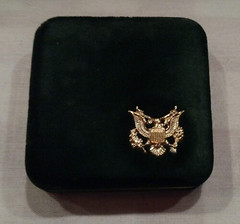
You forgot to mention that the U. S. Mint box was Green! That’s what makes it unusual. I have 40 - 50 of them, all with common Morgan or Peace silver dollars that Joe Gallo said came from the U.S. Mint store in Union Station in Washington, D.C.
To read the earlier E-Sylum article, see:
WAYNE'S NUMISMATIC DIARY: JULY 15, 2018 : U.S. Mint Silver Dollar Box
(http://www.coinbooks.org/v21/esylum_v21n28a23.html)
On Treating Musty-Smelling Books
Pete Smith writes:
My suggestions to reduce the musty smell in books:
1. Seal the book in a plastic bag with baking soda. Separate the book so it is not in direct contact with the powder.
2. Seal the book in a plastic bag with kitty litter. Apparently kitty litter has baking soda as an active ingredient. Keep this away from cats.
3. Put a laundry drier sheet in the pages of the book and seal it in a plastic bag. I don't know how much the drier sheet absorbs the smell and how much it leaves a different pleasant smell.
It might help if the book could be put on edge with the pages fanned open. There will not be much air circulation inside the bag.
I have never tried any of these techniques. I don't know how long they take to work. It probably relates to temperature and the extent of the damage. One week might work but a month would probably be better
Dick Johnson writes:
John Davenport was an expert on world crown size coins, writing several books on the subject. He moved from Davenport, Illinois to Florida in his retirement. After he died his extensive library was located but it was found a moldy mess. Completely valueless.
I have found this true of several books I have acquired from Florida. The atmosphere is so moisture-laden there that mold readily grows on paper pages. Libraries everywhere must be kept in controlled atmospheric conditions, with low moisture content.
For a great (but sad) report on Davenport's library "HOW NOT TO STORE BOOKS IN MIAMI", see Alan Luedeking's submission from the July 29, 2001 issue, linked below. -Editor
To read the earlier E-Sylum articles, see:
HOW NOT TO STORE BOOKS IN MIAMI
(http://www.coinbooks.org/esylum_v04n31a13.html)
NOTES FROM E-SYLUM READERS: JULY 15, 2018 : Treating Musty Smelling Books
(http://www.coinbooks.org/v21/esylum_v21n28a13.html)
PNG Authentication Certificates
Gerald Tebben writes:
I’ve been following the Breen/Taxay and now ANACS pre-slab authentication certificates. Has anyone reported a Professional Numismatists Guild authentication certificate? I have one for a piece of Ming Dynasty paper money I bought years ago.
Gerry's report is the first we've seen in The E-Sylum. His piece wasn't readily available for scanning. Would anyone else have a PNG certificate image they could share? Thanks. -Editor
To read the earlier E-Sylum articles, see:
BREEN AUTHENTICATION CERTIFICATES ON NEWMAN PORTAL
(http://www.coinbooks.org/v21/esylum_v21n27a12.html)
BREEN AND TAXAY AUTHENTICATION CERTIFICATES
(http://www.coinbooks.org/v21/esylum_v21n27a12.html)
MORE BREEN AND TAXAY AUTHENTICATION CERTIFICATES
(http://www.coinbooks.org/v21/esylum_v21n28a12.html)
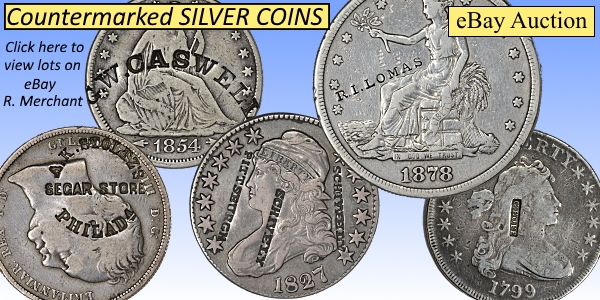
MORE ON U.S. AGRICULTURAL SOCIETY MEDALS
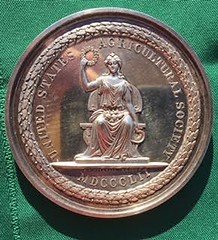
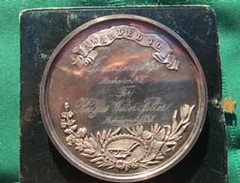
Jonathan Brecher writes:
The United States Agricultural Society medal is a U.S. Mint medal, catalogued as Julian AM-78. Julian does not provide mintages. In my experience it's "not that rare" as U.S. Mint medals go, which means "quite rare" in absolute terms. Sale prices have historically been in the range of $200 for bronze and $400 for silver examples, although the pictured example in the case is particularly nice. Examples of this medal were struck in gold, silver, and bronze.
Alan Weinberg agrees. He writes:
The medal was struck by the US Mint, Julian AM 78 and is known in bronze, silver and gold.
Bowers and Ruddy auctioned a gold specimen perhaps 30 years ago. This is the only gold I've ever seen.
It is a relatively common medal in silver - even in its case - and somewhat scarcer in bronze. Most extant specimens are hand engraved to a recipient.
A choice silver, engraved, in its original plush case circa 1875 would probably be worth $550.-$600
These independent assessments are in the same ballpark. Much of course, depends on the condition of the medal and the presence and condition of the presentation box and any accompanying materials. Jonathan noted that one example is coming up in August in a Stack's Bowers sale. Here's the listing. -Editor

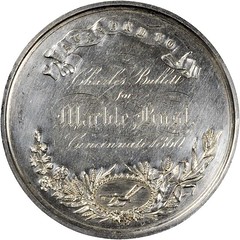
1860 United States Agricultural Society Award Medal. Silver. 74.8 mm. 115.4 grams. By F.N. Mitchell. Julian AM-78, Harkness Nat-280. Extremely Fine.
This rarely seen U.S. Mint medal was first struck at the Philadelphia Mint in 1858, and gold, silver, and bronze examples were produced until the Society ran out of funds in 1861. The reverse describes who this one is awarded to: CHARLES BULLITT / FOR / MARBLE BUST / CINCINNATI 1860. Numerous small contact marks and hairlines evident from old cleanings, although this piece is still presentable and actually quite attractive.
To read the complete lot description, see:
1860 United States Agricultural Society Award Medal. Silver. 74.8 mm. 115.4 grams. By F.N. Mitchell. Julian AM-78, Harkness Nat-280. Ext..
(https://auctions.stacksbowers.com/lots/view/3-BJCDI)
Thanks, everyone. -Editor
To read the earlier E-Sylum article, see:
QUERY: U.S. AGRICULTURAL SOCIETY MEDAL
(http://www.coinbooks.org/v21/esylum_v21n28a15.html)
HEEREN BROTHERS, WILHEIM MAYER, AND HK-222
Jeff Shevlin writes:
The Heeren Brothers Columbian Shield advertisement in last week's edition featured in the center pictured below it, a so-called dollar HK 222. That medal is attributed to Wilheim Mayer of Stuttgart, Germany. I find it curious it is depicted on the Heeren Brothers advertisement. Perhaps the attribution in H&K to Wilheim Mayer in Germany is incorrect?
Well, Heeren was a big operation, and they may not have done all the work in-house. It could well be that they produced and sold the medals, but farmed the engraving out to others such as Wilheim Mayer. I found a Heritage listing and the initials W.M. are on the obverse at the truncation of Miss Liberty's neck, so that's probably where that attribution came from. Below are images of the medal and the relevant portion of the Heeren advertisement. -Editor
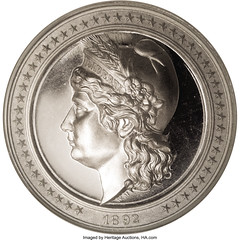
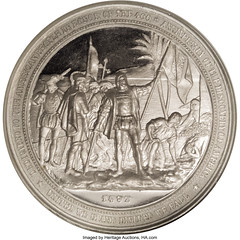
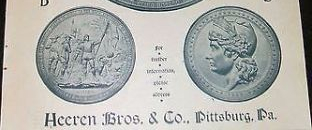
Jeff adds:
Well, Heeren was a big operation, but I find it unlikely that a large Pittsburgh-based operation would use engravers overseas in Germany, due to the logistics, timelines, costs, etc. Is it possible that the signature W M on the HK 222 medal being advertised by Heeren Brothers does not mean Wilheim Mayer?
A Newman Portal search helped me find a possibly relevant reference here in The E-Sylum - a 2016 submission by Paul Benner of Savannah, GA regarding the Columbian Shield. -Editor
It was created by my great great grandfather Frederick Mayer, a noted Pittsburgh artist and sculptor. The shield was indeed sold by Heeren Brothers of Pittsburgh. The shield was cast by Mayer's brothers who had a foundry in Stuttgart Germany.
So... the shields were created by Frederick Mayer and made in Germany. Was Wilheim Mayer related to Frederick Mayer? -Editor
To read the complete lot description, see:
1892 Liberty Head High Relief Columbian Exposition Dollar PR67 Ultra Cameo NGC. HK-222. One of the finest engraved pieces st..
(https://coins.ha.com/itm/so-called-dollars/1892-liberty-head-high-relief-columbian-exposition-dollar-pr67-ultra-cameo-ngc-hk-222-one-of-the-finest-engraved-pieces-struck/a/430-54.s)
To read the earlier E-Sylum articles, see:
ANOTHER COLUMBIA SHIELD LOCATED
(http://www.coinbooks.org/esylum_v19n08a16.html)
HEEREN BROTHERS COLUMBIAN SHIELD ADVERTISEMENT
(http://www.coinbooks.org/v21/esylum_v21n28a11.html)

VOCABULARY TERMS: LEGEND, INSCRIPTION, MOTTO
Dick Johnson submitted these entries from his Encyclopedia of Coin and Medal Terminology. Thanks. -Editor
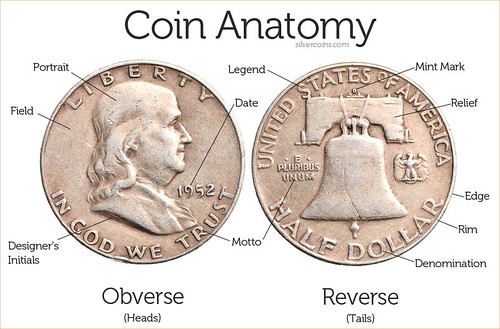
Image from varietyerrors.com .
A key to understanding the difference between legend and inscription – often confused in the numismatic field – is, in a word, location. Another term, motto, is lettering also appearing on numismatic items which is neither but can be found in either location. Here are all three encyclopedic entries to aid further understanding
Legend. The lettering following the contour, circumference or outer shape of a coin or medal; the wording near the edge, most often in a form of an arc just inside the border. Lettering in such an arc is called BOWED (the letters have a bowed BASE LINE). The legend differs from INSCRIPTION (virtually all other lettering on a numismatic or medallic piece, on a straight base line, most often horizontal); it also differs from the EXERGUE (lettering in the area below a line across the bottom of the device). Legends on coins and medals reinforce the theme and concept of their design and occasionally are like the wider meaning of the word legend: repeating a statement from a previous generation. In England legends are called circumscriptions.
The wording in a legend is often contracted or abbreviated to get the required statement into a small space. Also legends are often in a language different from the country issued – as Latin – to further add to their obscurity. Translating legends, however, is a vital function of numismatic study and legends are often indexed in numismatic literature.
Legends are always in capitol letters. Ocassionaly the words in a legtond are separated by a CENTER DOT. This is at the option of the item’s designer, there are no rules regarding these. In modern times the use of center dots is for artistic effect. When cataloging, including the center dots is part of a legend’s description.
A legend containing errors of any kind (misspelled words or titles, errors of dates or figures, or mis-struck letters) is called BLUNDERED LEGEND. Legends normally run clockwise, or left to right, however Arabic and other languages read right to left. Legend is also the lettering on a coat of arms or heraldic shield in any position. The legend may also be a MOTTO, somewhat of a slogan, if it appears next to the border.
Multiple line legends. The legend is usually only one row of lettering along the rim, adjacent to the border or border elements. However, the legend may be more than one line. Such a DOUBLE LEGEND was used as early as 1250 on French coins.
Three or more lines of legend are rare, but do exist. An extreme case is a six-line MULTIPLE LEGEND on the Barcelona Columns of Julia Augusta Medal of 1970, issued by Calico in Spain. The legend has a list of countries throughout the world with cities named Barcelona. A spiral legend is a circular legend that runs in an ever decreasing pathway inside previous lettering, a VOLUTE, often to the very center of the design.
Early legend technique. Hill and Pollard in Medals of the Renaissance tell of early portrait medals modeled on a disk and the legend modeled on a separate ring that fits closely around the disk. Examples are found with the lettering in different positions in relation to the portrait, so the ring was kept separate, and rotated to different positions between castings. This method was employed in the 15th century by Amadeo da Milano, a jeweler turned medallist, by Enzola and others. See BORDER.
CLASS 02.10
References:
N19 {1993} Mackay, p 51-77.
O10 {1920} Hill.
Inscription. The lettering on a coin or medal usually appearing horizontally across the field, or upon a figure or device, but in the broadest sense lettering in any position on a numismatic item. It differs from LEGEND which is lettering following the circular contour of the round coin or medal; and EXERGUE, the lettering in this area below the BASE LINE. Also VERTI CAL INSCRIPTION exists – lettering which appears vertical to the base line – (or even a wavy inscription with an UNDULATING BASE LINE). The study of inscriptions on numismatic items is a branch of epigraphy; the lettering on coins and medals is of vital importance, just as is lettering on monuments, temples and buildings is valuable documentation to historians.
Inscription Content. Inscriptions are dramatically related to the space available in a coin or medal’s design. They are abbreviated, or shortened, to fit a tight space –as for most coins – or occasionally expanded for larger medals (words added or lettering made larger). Inscriptions often contain numbers, as dates (either Arabic or Roman), a monarch’s number (most often Arabic). Dates of coronation, inauguration, FOUNDING DATES, or completion date of some public project, all are found as inscriptions. (See DATES AND DATING.)
Often the text of an inscription is composed of MOTTOS, or QUOTES, as from the Bible, Shakespeare, or prominent authors or poets. (Parts of poems are sometimes inscriptions, in fact the German language has a word for a rhyming inscription on a coin or medal, seligkeitsthaler.)
Inscription characteristics. For the most part inscriptions identify the person or event portrayed in the design and reinforces this by title, date or both. Inscriptions are not captions, like the description of the picture portrayed, but rather they are an integral part of the total design. Inscriptions reveal in words the essence or concept of the piece, what the device reveals in design.
The lettering of inscriptions on coins and medals is almost always in caps, from the tradition of Greek and Roman inscriptions. The shape or typeface of the lettering is, or should be, in harmony with the style of the device. See LETTGERING.
For nearly 2,000 years lettering was formed on coins and medals – at least those that are struck – by punches. A die would be engraved with the device and the lettering would be punched in afterwards to complete the die. See PUNCHES, PUNCHEONS. (Since 1900 most dies are made from patterns in which both device and lettering, all raised and sunken relief are in the pattern and replicated into the die.)
Varieties in inscriptions. More variations are found in lettering than in devices and other pictorial elements in coin and medal designs. Separate letters, particularly with punches, present more opportunity for an errant letter to be used. Errors of spelling are called BLUNDERED INSCRIPTIONS. These are often corrected causing two DIE VARIETIES of the piece.
Dates in inscriptions are sometimes corrected – or UPDATED – and titles are infrequently changed for the monarch or person portrayed. In numismatics, examination of inscriptions is very important for identifying varieties.
Cataloging inscriptions. Every letter, punctuation and STOP (typographical ornament) should be recorded when cataloging inscriptions. Record exactly every letter and digit; if the numismatic item bears IIII do not record IV. Follow foreign language exactly. Identify any errors in either spelling or letter defects, as upside down PUNCH, for example. (Broken serifs on punches are even cataloged but only for identifying minor die varieties.)
A most important rule: Identify the language of the inscription and translate it into the language of the main text.
Inscriptions sometimes appear on coats of arms, shields, or other objects in the design. These should be identified in the description (but are usually not indexed).
Indexing inscriptions. When indexing inscriptions, alphabetize by first words; omit the articles “a” and “the” at the beginning only (record all letters but include all articles afterwards); disregard spaces between words and all numbers (both Arabic and Roman). Indexing by computer will include the spaces, so some adjustment may be necessary after the computer sorts inscriptions alphabetically.
Foreign language inscriptions are indexed exactly as they appear on the numismatic item. Long inscriptions (as a TYPOGRAPHIC reverse) may be indexed by first words but may be shortened to the first line or two (then adding an ellipse, “...”). This eliminates the need to record the entire lengthy inscription in the index.
Some European numismatic catalogs index all the cataloged items by their inscriptions – so important is it considered in European numismatic and medallic art. For some reason such an index seems less important to Americans.
CLASS 02.10
References:
NE42 {1982} Doty, p 125 (epigraphy), 178-179 (inscription).
NC8 {1988} Breen, p 5-7 (Colonial inscriptions).
N19 {1993} Mackay, p 51-77.
I've always thought that coins, tokens and medals must be cataloged with their entire inscriptions spelled out. Why? Because when faced with an unknown item, the inscription is the easiest place to start. If someone has compiled an index of inscriptions, it's easy to look up the piece by first looking up the words in the inscription.
Compiling an index is a laborious effort when done by hand, but computers can easily handle this chore today - that's what Google is, basically. Type the words of an inscription into a search engine and you just might find an instant match.
But remember, while computers are getting better and smarter all the time, they don't read inscriptions directly from coin images - they can only index the text provided for them. So whenever cataloging numismatic items, especially online, PLEASE include the complete inscriptions. -Editor
Motto. A slogan appearing as a legend or inscription on a numismatic item. Current American mottoes: E Pluribus Unum, Liberty, In God We Trust. Not all lettering is a motto; it is a saying that must be: (1) extremely brief (not a lot of room on a coin or medal), (2) be a positive statement of some general truth and public acceptance, (3) often of moral or ideal guiding principle. Occasionally it is abbreviated because of the very limited space available for the lettering. Occasionally it is in a language other than that of the remainder of the item. Mottoes may appear as legend near the edge or as inscription elsewhere and may be traced back to political slogans on late Roman coins.
Mottoes are often found on ribbons, BANDEROLES or COATS OF ARMS, they often have some heraldic connection. Like all lettering, mottoes are sometimes indexed for reference. In cataloging they should be recorded (and if in another language, they must be translated). Compare IMPRESA used in the renaissance.
CLASS 02.10
References:
L6 {1983} Pine.
NC9 {1988} Breen, p 5-7 (Colonial inscriptions).
Looking for the meaning of a numismatic word, or the description of a term? Try the Newman Numismatic Portal's Numismatic Dictionary at: https://nnp.wustl.edu/library/dictionary
Or if you would like a printed copy of the complete Encyclopedia, it is available. There are 1,854 terms, on 678 pages, in The Encyclopedia of Coin and Medal Technology. Even running two a week would require more than 19 years to publish them all. If you would like an advance draft of this vital reference work it may be obtained from the author for your check of $50 sent postpaid. Dick Johnson, 139 Thompson Drive, Torrington, CT 06790.
VOCABULARY TERM: CIRCULATION CAMEO
We like words here at The E-Sylum. A lengthy discussion begun in 2016 on the Coin Talk site deals with a certain type of circulated coin the proposer called "Circulation Cameos". I became aware of this when some new content was added this week. Are E-Sylum readers familiar with this term? -Editor
I've long been a fan of original grey-toned circulated silver with a "two-tone" look that provides contrast between darker fields and lighter devices. Most of you probably know what a "Cameo" proof coin is, right? A coin with deeply mirrored fields and frosty portrait or devices?
Well, a "Circulation Cameo" is an entirely different thing, but the same principle, really. It is a darker toned coin that got lighter highlights as an effect of light rub on the higher portions of the design, giving it a sort of "cameo" contrast, though not in the same was a proof, of course, since we're talking about circulated coins.
I wanted a good shorthand term to describe this look, so I came up with "Circulation Cameo", or "CircCam", for short. This term gained some acceptance on the PCGS/Collectors Universe boards, and I've seen members there adopt it and even use it in their eBay descriptions.
Now, I could go on and on about this, but the best way to further describe the look is to post some examples.
This is a CircCam. Rather dark, to be sure, but the coin was not that brown looking in hand after I bought it from these images. It was a perfect grey CircCam. A lot of this stuff might be too dark for some people's tastes, but I like me a good "black-n'-white" CircCam. I'm not a fan of completely-dark silver, but when you've got the contrast to make the design elements "pop", it's a good thing.
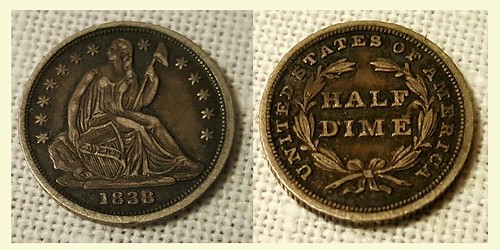
Here are a couple more examples. -Editor
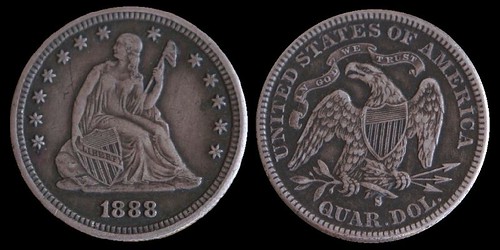
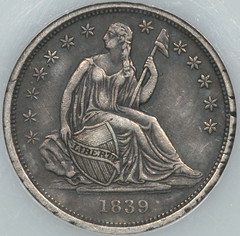
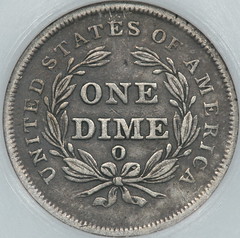
Language is constantly evolving, and I have no objections to new terms - they serve a need or wouldn't have been invented in the first place. What do readers this of this one? See the complete thread online (17 pages worth)! -Editor
To read the complete discussion thread, see:
What is a "CircCam", you ask? Look and see! And post yours! (Cited from: https://www.cointalk.com/threads/what-is-a-circcam-you-ask-look-and-see-and-post-yours.288335/)
(https://www.cointalk.com/threads/what-is-a-circcam-you-ask-look-and-see-and-post-yours.288335/)
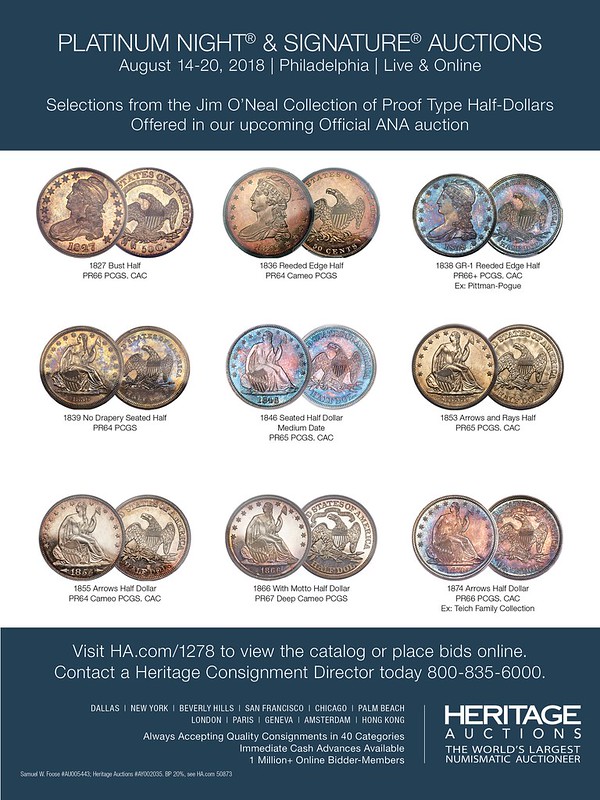
FRANK HOWARD BOND (1853-1919)
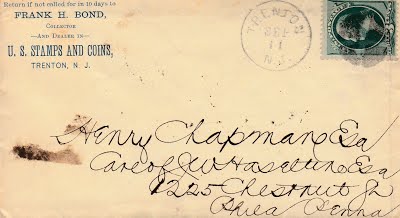
Frank Howard Bond (1853-1919), was born on February 21, 1853 at Trenton, Mercer, County, New Jersey, son of Joseph W. Bond (1821-1875), a native of New Jersey and a merchant, and Cornelia Aumack Bond (1828-), also a native of New Jersey.
On September 25, 1879, he married Mary Barnes (1855-1929).
In 1900, they moved to Collingswood, Camden County, New Jersey.
In the 1910 US Census he was listed as a cashier in a Spice Factory, and lived at 609 Park Avenue, Collingswood, Camden County, New Jersey.
On April 13, 1914, he incorporated the Greater Collingswood Building and Loan Association, as the president.
The 1915 New Jersey State Census lists him living at Park Avenue, Collingswood, New Jersey.
He died in 1919. He is buried in Arlington Cemetery, Pennsauken, Camden County, New Jersey.
To read the complete article, see:
BOND, FRANK HOWARD
(https://sites.google.com/a/numismaticmall.com/www/numismaticmall-com/bond-frank-howard)
The entire inventory of the Lupia Numismatic Library is for sale. Individual items will be available before the remaining archives are broken up into parcels sold at philatelic auctions in the U. S. and Hong Kong. Check NumismaticMall.com frequently as dozens of new items with estimates will be posted daily until everything is sold.
All inquiries will be given prompt and courteous attention. Write to: john@numismaticmall.com .
THE BOOK BAZARRE
CHARLES BARBER PHOTOS DISCOVERED
A Numismatic News article (published July 20, 2018) by John Frost of the Barber Coin Collectors’ Society discusses a trove of information about U.S. Mint engraver Charles Barber. With permission, here is an excerpt and several of the referenced photos. -Editor

One of the aspects that hasn’t helped the image of Charles Barber is that the one photo of him that permeates numismatic literature and any mention of the man comes from a grainy old group photo from the mint, in which Barber appears as a grumpy old man. In meeting the family, we discover a beautiful painting of him, along with six never-before-seen photographs. These new pictures of him more accurately portray him as he has been viewed by the family all these years – as a warm and kind family man, blessed with good friends.
Other historical artifacts shown to me by the family include a bronze bust of Abraham Lincoln created by Charles Barber, along with the original Lincoln photograph Charles used to create it. Another remarkable item is a 39-star flag, which was presented to Charles Barber by President Theodore Roosevelt. Barber was to take the flag with him on his trip to Europe in 1905, in which he visited a number of foreign mints on an information-sharing mission.
Barber’s passport and numerous Mint memos (from various departments with questions they wanted Charles to ask their counterparts overseas) are also held by the family. And new information is learned from the diary of Charles’ 19-year-old daughter Edith, who accompanied her father and his wife on the European trip. The diary also provides strong evidence that Charles Barber and George T. Morgan, designer of the Morgan silver dollar, got along well, despite the assumptions of many that the two disliked each other.
The Barber Coin Collectors’ Society hopes that the old photo of Charles Barber will be retired in lieu of one of the seven new images of him that make a more accurate portrayal of him.
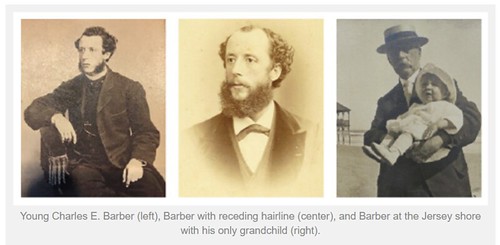
To read the complete article, see:
Seven new faces of Charles Barber
(http://www.numismaticnews.net/article/seven-new-faces-of-charles-barber)
CHARLES BARBER'S 1905 EUROPEAN TRIP
The Summer 2018 issue of the Journal of the Barber Coin Collectors’ Society includes an article by editor John Frost that discusses the Barber family information trove that BCCS learned about and provides some interesting details about Charles Barber's business trip to Europe in 1905 as seen through the diary of his accompanying daughter Edith. With permission, here is an excerpt of the article. -Editor
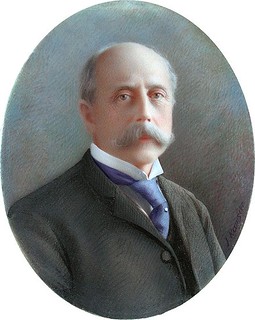 In Search of Charles Barber, Part 2
In Search of Charles Barber, Part 2
The European Trip of 1905
By John Frost, BCCS #892
In the previous issue of the Journal, I wrote about a remarkable set of circumstances that led me to meet and visit with two of the great-grandsons of Charles Barber. New photos and a painting of Barber were presented to the membership for the first time, along with a number of other artifacts. The two Trepagnier brothers were grandsons of Edith Barber, Charles’ daughter (1886-1970).
During the first visit with both brothers, I became aware of a trip to Europe that Charles made in 1905 at the request of the U.S. Government. This trip combined some vacation time with official visits to a number of European mints, an information-sharing trip. Charles would head to Europe for 3 months during that summer with his daughter Edith (then 19 years old) and his second wife Caroline (Martha Barber, his first wife, had passed away in 1899). It would be a combined business-vacation trip.
Over several more visits with the Trepagniers, they provided an amazing number of new artifacts for study and photography, and graciously made them available for this article, and also for exhibiting. This article will focus solely on this 3-month trip to Europe. A number of artifacts will be presented in the article, but tying all of these items together was the Diary of Edith Barber, a book she wrote that chronicled their trip in detail, from a personal perspective.
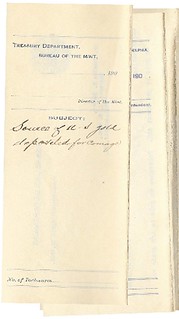 To start with, prior to the trip, Charles Barber received a letter of authorization from the U.S. Treasury Department, and one from the Director of the Mint, George E. Roberts, detailing some of the information about which Barber was to make inquiries. The State Department notified American diplomatic representatives in Italy, Austria-Hungary, Germany, Belgium, France, and Great Britain at the request of the Treasury Department about Barber’s coming to Europe.
To start with, prior to the trip, Charles Barber received a letter of authorization from the U.S. Treasury Department, and one from the Director of the Mint, George E. Roberts, detailing some of the information about which Barber was to make inquiries. The State Department notified American diplomatic representatives in Italy, Austria-Hungary, Germany, Belgium, France, and Great Britain at the request of the Treasury Department about Barber’s coming to Europe.
In addition to the approval documents, several departments within the U.S. Mint provided Charles with a list of questions to ask their counterparts in the foreign mints. These original memos and letters were provided for study by the family. Some of these memos have Barber’s hand-written notes, where he jotted some notes in response to the questions.
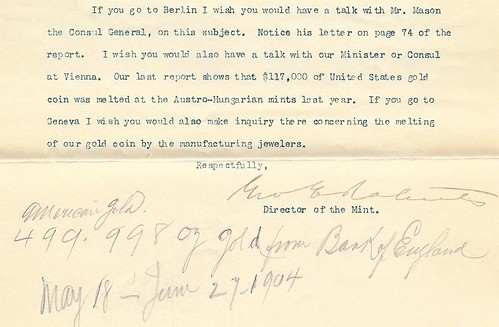
For his trip, President Theodore Roosevelt presented Charles Barber with a 39-star U.S. flag to take with him. This is a most interesting artifact, as the 39-star flag was never officially flown. In 1889, the Dakota Territory was expected to join the union as the 39th state, and flag makers began making them in anticipation. At the last moment, Dakota was divided into North and South, and the U.S. went from 38 states to 40. Because Roosevelt lived in Dakota Territory in the northern badlands beginning in 1884, he had likely acquired the 39-star flag in 1889 and kept it as a prized possession, until be entrusted it to Barber in 1905. The 1½’ by 2½’ flag was an amazing way to learn about the European trip of 1905.
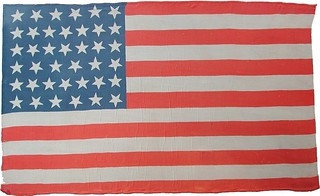

For more information on the Barber Coin Collectors' Society, see:
http://www.barbercoins.org/
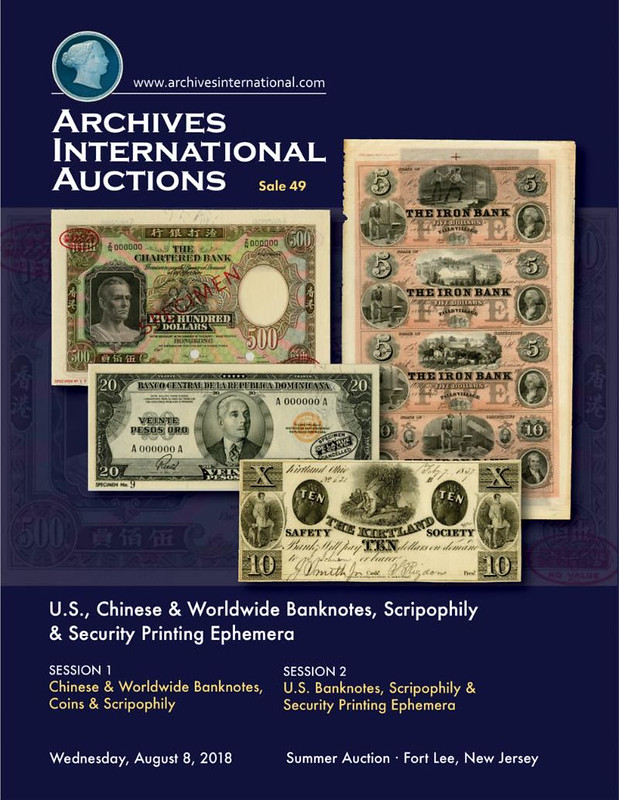
FRASER FINDS IN SHELL KNOB, MO
Rich Jewell is the Editor of The Clarion, the official publication of the Pennsylvania Association of Numismatists. He is also a collector of coins, medals and the plasters and galvanos used by artists in making coins and medals. Intrigued by an article in The Numismatist magazine from the American Numismatic Association, Rich added some new trophies to his already important collection. He provided this account for E-Sylum readers. Thanks! -Editor
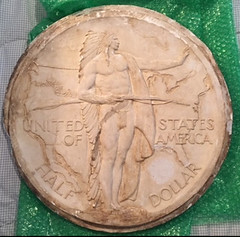 June’s Numismatist had an article by Western Pennsylvania writer Mitch Olszak, titled "Fraser Finds!" A very interesting article
to say the least. It seems a couple in Shell Knob, Missouri, Tom and Nancy Rochovansky, had inherited a very large collection of James Earle Fraser and Laura Gardin Fraser’s plasters, bronzes
and statues in various forms of completion. The article went on
to say that some of the Fraser’s personal papers and several of
their bronzes wound up at Syracuse University in upstate New
York. Other items were obtained by the National Cowboy and
Western Heritage Museum in Oklahoma City, Oklahoma. And even after these two institutions
had their picks, hundreds of items remained available.
June’s Numismatist had an article by Western Pennsylvania writer Mitch Olszak, titled "Fraser Finds!" A very interesting article
to say the least. It seems a couple in Shell Knob, Missouri, Tom and Nancy Rochovansky, had inherited a very large collection of James Earle Fraser and Laura Gardin Fraser’s plasters, bronzes
and statues in various forms of completion. The article went on
to say that some of the Fraser’s personal papers and several of
their bronzes wound up at Syracuse University in upstate New
York. Other items were obtained by the National Cowboy and
Western Heritage Museum in Oklahoma City, Oklahoma. And even after these two institutions
had their picks, hundreds of items remained available.
The article explains how the writer became involved and his story line developed through the years 2016-2018. Some of the photos in the article attracted my immediate attention and piqued my interest. But what could one do? Call or write the ANA, or the author?
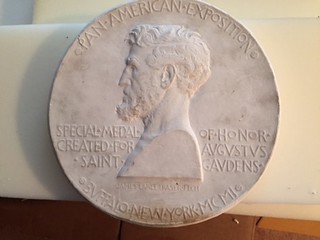 While I was contemplating what to do I called an author friend of mine in Branson, MO to see if he was going to have an article ready for an earlier issue of The Clarion. During the conversation he mentioned “did I happen to see the article in The Numismatist regarding the Fraser’s?” I said I did and I was very interested in finding what all they had remaining. He said Shell Knob was only an hour away and he had already made contact with the Rochovanky’s and was heading there in a few days. What good fortune, dumb luck, whatever. I asked my friend if he’d put a list together of what he thought
was interesting or unique for a possible purchase by yours truly. He said he’d be more than happy to.
While I was contemplating what to do I called an author friend of mine in Branson, MO to see if he was going to have an article ready for an earlier issue of The Clarion. During the conversation he mentioned “did I happen to see the article in The Numismatist regarding the Fraser’s?” I said I did and I was very interested in finding what all they had remaining. He said Shell Knob was only an hour away and he had already made contact with the Rochovanky’s and was heading there in a few days. What good fortune, dumb luck, whatever. I asked my friend if he’d put a list together of what he thought
was interesting or unique for a possible purchase by yours truly. He said he’d be more than happy to.
By the end of the week I had an e-mail listing of over forty-five items of interest, mostly consisting of original plasters and bronzes by the Fraser’s. What a collector’s dilemma-how do you narrow it down to an affordable amount? And what were the prices for each item? My friend was in such a state of shock that he hadn’t asked for the prices of anything (I personally think it was an excuse to make a return visit, to be certain he had seen everything the Rochovansky’s had to offer)!
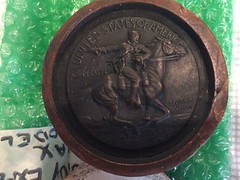
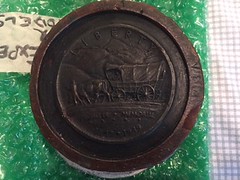
Finally, prices were obtained and now the negotiations began. It wasn’t long before prices were reached and agreed upon and three boxes were packed by the Branson UPS Store and headed to Western PA.
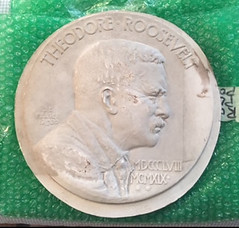 Thursday, July 19th was an anxious day - how will these plasters arrive? Around 1:15 PM the UPS truck arrives. I see the driver stacking three boxes on top of one another in the truck's door way (oh no- he’s going to try to carry all three at once!) He drops the smallest one, oh crap, I’m now expecting the worst, smashed plasters or a least chipped pieces. But
no, the UPS Store has done an awesome job of packaging as nothing is broken, chipped or smashed. One package was 24x 24x16,” the second box was 16x16x16,” and the smallest was 14x14x14.” I only mention this so you get an idea how big the containers were stacked.
Thursday, July 19th was an anxious day - how will these plasters arrive? Around 1:15 PM the UPS truck arrives. I see the driver stacking three boxes on top of one another in the truck's door way (oh no- he’s going to try to carry all three at once!) He drops the smallest one, oh crap, I’m now expecting the worst, smashed plasters or a least chipped pieces. But
no, the UPS Store has done an awesome job of packaging as nothing is broken, chipped or smashed. One package was 24x 24x16,” the second box was 16x16x16,” and the smallest was 14x14x14.” I only mention this so you get an idea how big the containers were stacked.
Most of the plasters and bronzes have already found homes in Western PA. I just wanted to share these treasure trove pieces with the many collectors out there who think the numismatic market place is unexciting or dull and to thank Mitch Olszak for bringing this to our attention.
IMAGES:
Amazing. I, too had seen the Numismatist article and was dumbstruck that such a hoard of material still existed. Congratulations to the institutions and indivuals who are now the caretakers of this wonderful numismatic legacy. -Editor
CARNEGIE RARE BOOK THEFT HEARING SCHEDULED
For bibliophiles there's nothing lower than a bookthief. Charlie Davis passed along an article and blog with the latest on the case of the Carnegie Library of Pittsburgh employee and a local bookseller charged with stealing $8 million worth of rare volumes. Thanks. As noted earlier the library does hold a significant collection of numismatic literature, but it is not known if any of those books are involved. The photo below shows librarian Greg Priore at the library in 1999. -Editor
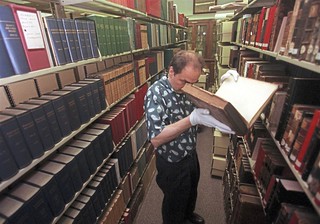 A library archivist and an antique bookseller are charged with stealing millions of dollars' worth of rare books, illustrations, maps and photographs from a Pittsburgh library over a 20-year period.
A library archivist and an antique bookseller are charged with stealing millions of dollars' worth of rare books, illustrations, maps and photographs from a Pittsburgh library over a 20-year period.
Authorities Friday charged former Carnegie Library rare books manager Gregory Priore and bookstore owner John Schulman with theft, conspiracy and other counts in the disappearance of hundreds of items. Detectives put the estimated value of the materials stolen or damaged at US$8 million.
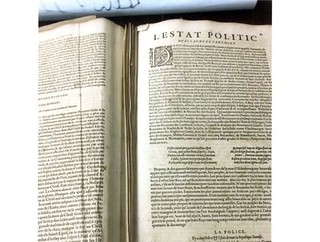 Prosecutors say Priore would sometimes use an X-Acto knife to cut maps and bookplates out of some books.
Prosecutors say Priore would sometimes use an X-Acto knife to cut maps and bookplates out of some books.
They allege Priore walked out of the library with the items and took them to the bookstore a block away. They say the bookseller paid Priore up front and then pocketed the cash from items he could unload.
To read the complete article, see:
Archivist, bookseller charged in US$8M rare book theft scheme
(https://www.ctvnews.ca/world/archivist-bookseller-charged-in-us-8m-rare-book-theft-scheme-1.4021375)
Here's an excerpt from a lengthy Pittsburgh Post-Gazette article. Larry Dziubek also pointed this out, which was a front-page item in the print edition. -Editor
It ranks as one of the largest library thefts in history.
Greg Priore, 61, of Oakland, who worked as the sole archivist and manager of the library’s rare book room since 1992, is charged with theft, receiving stolen property, conspiracy, retail theft, library theft, criminal mischief and forgery.
John Schulman, 54, of Squirrel Hill, who owns Caliban Book Shop, is charged with theft, receiving stolen property, dealing in proceeds of illegal activity, conspiracy, retail theft, theft by deception, forgery and deceptive business practices.
Both men turned themselves in Friday morning at City Court in Downtown Pittsburgh. Court records show that both were released on their own recognizance following an afternoon arraignment. A preliminary hearing for them is scheduled for Aug. 1.
In total, $1.1 million worth of stolen items have been recovered through the efforts of Pall Mall, the DA’s office and the art collecting community, the complaint said.
The most valuable item stolen, which has been recovered, is Isaac Newton's "Philosophiae Naturalis Principia Mathematica," valued at $900,000.
The most valuable item still missing, according to the complaint is, "The Journal of...," by George Washington, listed as being worth $250,000.
Other evidence detailed in the complaint included an email Mr. Schulman sent to the operator of an online search engine for old, rare and out of print books for sale worldwide. Mr. Schulman sent the operator an email in May 2017 in which he asked that the “ghost record’ for a book he once sold be removed from the site so it would no longer appear in future Google searches.
According to the operator, the item for which Mr. Schulman requested records be deleted was “Newton's Principia Mathematica,” which he sold, the complaint said, for $95,000 jointly to Bartleby’s Books and London book dealer Peter Harrington on July 15, 2013.
To read the complete article, see:
Two men charged with stealing more than $8 million in rare books from Carnegie Library
(http://www.post-gazette.com/news/crime-courts/2018/07/20/Two-men-charged-with-stealing-8-million-rare-books-Carnegie-Library-Greg-Priore-John-Schulman/stories/201807190205)
Tom Fort reports that AbeBooks.com has pulled the listings of Caliban book shop.
I don't know what odd interpretation of laws brought the situation about, but apparently readers in the E.U. will not have direct access to the Post-Gazette article. But Charlie passed along a link to the Vialibri blog which posted a copy. -Editor
Unfortunately, the Post-Gazette website is completely blocked to visitors in the European Union, making access to these latest details difficult for anyone on this side of the Atlantic to obtain. We have, however, been sent a PDF copy of the online version of the newspaper story and are thus able to provide it here.
To read the complete blog article, see:
Charges filed in Carnegie library theft
(https://blog.vialibri.net/)
The Post-Gazette article helpfully embeds a 13-page spreadsheet listing of the items known to have been stolen. As noted earlier, two obscure numismatic items are on the list. Be on the lookout for these:
Charles Henry Hart, Catalogue of the Engraved Portraits of Washington, New York: Grolier Club, 1904; Of 425 copies (est. $800)
Lorado Zadoc Taft (American, 1860 - 1936), Medal Struck in Celebration of the Sixty-Sixth Anniversary of the Birth of James Whitcomb Riley, 1916; #219 of 500 (est. $500)
-Editor
To read the earlier E-Sylum articles, see:
CARNEGIE LIBRARY NUMISMATIC LITERATURE
(http://www.coinbooks.org/esylum_v07n29a09.html)
LIBRARY RARE BOOK ROOM
(http://www.coinbooks.org/esylum_v11n22a05.html
CARNEGIE LIBRARY OF PITTSBURGH RARE BOOK THEFTS
(http://www.coinbooks.org/v21/esylum_v21n12a07.html)
CARNEGIE LIBRARY RARE BOOK THEFT DEVELOPMENTS
(http://www.coinbooks.org/v21/esylum_v21n26a24.html)

NUMISMATIC NUGGETS: JULY 22, 2018
Here's a selection of interesting or unusual items I came across in the marketplace this week. Tell us what you think of some of these. -Editor
Corio, Gold Stater
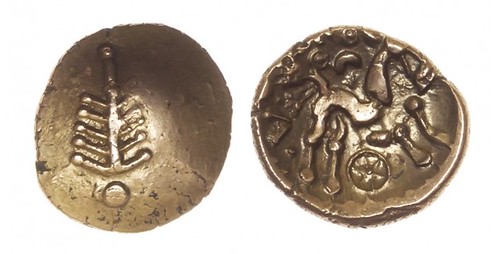
The Dobunni, Corio (c. 30-15 BC)
AV Stater.
Obverse: Dobunnic ‘tree’ emblem.
Reverse: Stylised horse with three tails, wheel below, hidden face above.
Nearly Extremely Fine. Nicely struck ‘tree’ emblem. Very rare.
The exact nature of the emblem which appears on impressive gold staters from the Dobunni remains a mystery. Theories range from the so called ‘Tree of Life’ to an abstract celtic design. Regardless, examples of these coins generally exhibit very weak or worn emblems. This rare example, however, boasts a nicely struck design in good metal. A delightful piece of celtic gold.
A fixed price offering from Baldwin's in London. The tree is what caught my eye. Almost looks like a fish skeleton. -Editor
To read the complete lot description, see:
Corio, Gold Stater
(https://www.baldwin.co.uk/corio-gold-stater.html)
1856 Flying Eagle Cent
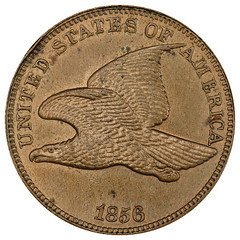
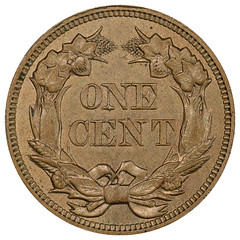
S-3 *** The iconic 56 Flyer is even more special as a business strike. This beautiful and original example could easily be a 63 to my eye. The surfaces are pristine and smooth and the strike is absolutely full. A must-have for the collector building a mint state set. 61's bringing 17,250 and last 62 @18,600. A bonafide rarity and world-class coin.
A great example of a classic key U.S. type coin. I came across this and the following piece this week on the web site of Harry Laibstain Rare Coins (HLRC). -Editor
To read the complete item description, see:
1856 1C FLYING EAGLE S-3 *** PCGS MS62
(http://hlrc.com/Inventory/CoinViewer?id=868800004&c=23)
1806 Half Dollar, O-108
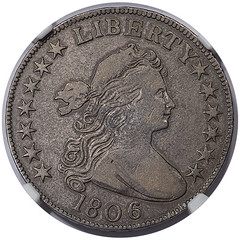

O-108,T-2,R.7 *** Rarest turban half in the Redbook set with less known than 17/4! This Overton plate coin is a sharp example for the grade. It is nicely made with all major devices fully outlined and quite bold. The motto is full, indicating closer to XF than VF. We have handled several of these rarities over the years. The most recent was a coin from the Stumpy Meyers Collection in VG with a Cud that sold for 110k. This is an excellent opportunity to own a coin that only shows up in multiyear intervals and is very reasonable at current levels and can complete your redbook set.
Respectible example of another scarce coin, and you can't beat an Overton pedigree. Also offered by Harry Laibstain. -Editor
To read the complete item description, see:
1806 50C KNOB 6, NO STEM O-108,T-2,R.7 *** NGC VF25
(http://hlrc.com/Inventory/CoinViewer?id=868549005&c=23)
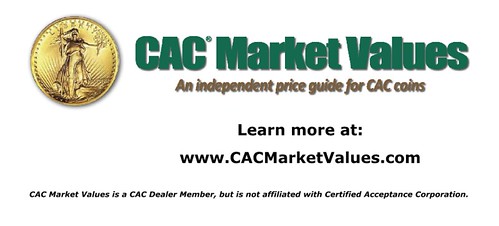
CAESAREA MINT COINS UNCOVERED IN GEORGIA
Arthur Shippee forwarded this article from Science in Poland about a Roman coin hoard discovery in Georgia "(not the one in the US)". Thanks. -Editor
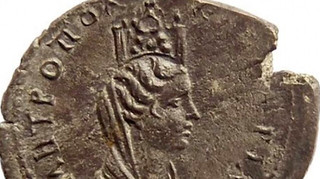 Bronze and silver Roman coins have been discovered by a Polish-Georgian team of archaeologists conducting excavations in the Roman fort of Apsaros Georgia. According to the discoverers, this could be a small part of a larger treasure.
Bronze and silver Roman coins have been discovered by a Polish-Georgian team of archaeologists conducting excavations in the Roman fort of Apsaros Georgia. According to the discoverers, this could be a small part of a larger treasure.
The oldest coins in the find were minted during the reign of Hadrian (117-138 AD); the youngest come from the last years of the reign of Septimius Severus (beginning of the 3rd century AD).
"All coins were found very close to each other in the Roman fort Apsaros" - told PAP Dr. Radoslaw Karasiewicz-Szczypiorski from the Institute of Archaeology of the University of Warsaw, project leader from the Polish side. Georgian partner is Prof. Shota Mamuladze from the Batumi Shota Rustaveli State University and Gonio-Apsaros Museum and Reserve.
Polish and Georgian researchers will search for more coins. The excavation season will continue until the end of July. According to the numismatics expert of the expedition, Dr. Piotr Jaworski from the Institute of Archaeology of the University of Warsaw, the discovered coins might be a small part of a larger treasure. It could be scattered as a result of later earthworks and construction works in the fort. After the Romans, Byzantine, Ottoman and even Soviet garrisons were also stationed in the fort.
All discovered coins come from the mint in Caesarea, the capital of Cappadocia - the place located nearly 1000 km from Apsaros. They were made of bronze and silver.
To read the complete article, see:
A treasure of silver and bronze coins discovered in Georgia
(http://scienceinpoland.pap.pl/en/news/news%2C30287%2Ctreasure-silver-and-bronze-coins-discovered-georgia.html)
ICENIAN COINAGE STUDY
Here's an excerpt from a great article in Current Archaeology about a study of Iron Age coinage. -Editor
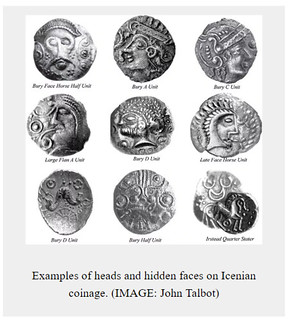 In a period that is largely defined by the Romans and their written histories, thanks to a relatively poor archaeological record, coinage offers one of the best ways of learning about Britain’s sometimes elusive Late Iron Age tribes. A ten-year study of the coins of the East Anglian Iceni by John Talbot has delved into the production, distribution, and characteristics of their currency, illuminating previously unknown aspects of their culture. Here, he explores questions of identity, and hunts for hidden faces.
In a period that is largely defined by the Romans and their written histories, thanks to a relatively poor archaeological record, coinage offers one of the best ways of learning about Britain’s sometimes elusive Late Iron Age tribes. A ten-year study of the coins of the East Anglian Iceni by John Talbot has delved into the production, distribution, and characteristics of their currency, illuminating previously unknown aspects of their culture. Here, he explores questions of identity, and hunts for hidden faces.
It is often suggested that Iron Age coinage is not money in the modern sense of the word, being rather more analogous to prestige objects – used by societies in various forms of gift exchange – but there was little evidence known to support this theory. To address this question and hopefully learn more about the Iceni in the process, over the course of ten years I studied dies relating to over 10,000 coins. This enabled me to work out the organisation of the coinage, where previously there had been long lists of seemingly unconnected types – a process that not only provided a more in-depth and accurate chronology for the coins and how they developed over time, but also revealed more about the sophistication and nuance of the Icenian culture.
I used computer graphics to superimpose photographs of one coin onto another; this allowed me to fade or cut through the top image to establish whether two coins were struck from the same die. Identification was further facilitated by developing a technique to provide composite images of coins struck by different parts of the same die. These images can help to reconstruct almost complete dies.
Using these methods, the project identified almost 1,600 different Icenian official dies and several hundred Iron Age forgeries. Many of these formed long die-chains with a definitive internal chronology, and by comparing these to other evidence like hoard content and distribution, the organisation of Icenian coinage became clearer.
 This period also saw much experimentation with numismatic imagery and frequent variations from die to die. There was some consistency, though. The obverse of the gold coins was like other British Iron Age coinages and bore abstracted imagery originally derived from Macedonian staters, but via Gallo-Belgic antecedents. The reverse, however, is specific to the Iceni. It depicts a wolf, or large dog, with a bird on its back.
This period also saw much experimentation with numismatic imagery and frequent variations from die to die. There was some consistency, though. The obverse of the gold coins was like other British Iron Age coinages and bore abstracted imagery originally derived from Macedonian staters, but via Gallo-Belgic antecedents. The reverse, however, is specific to the Iceni. It depicts a wolf, or large dog, with a bird on its back.
To read the complete article, see:
The die is cast: Investigating Icenian coinage
(https://www.archaeology.co.uk/articles/the-die-is-cast-investigating-icenian-coinage.htm)

1813 HOLEY DOLLAR OFFERED
The Australian Holey Dollar is a perennially popular coin. An example offered in the upcoming Noble auction is expected to bring over AUS $300,000. -Editor
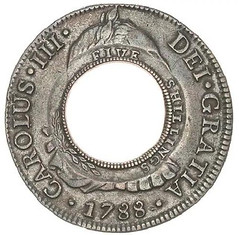
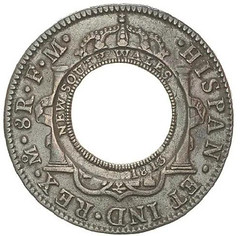
ONE of the “finest known” examples of Australia’s earliest coin is expected to fetch more than $300,000 when it goes up for auction in Sydney next week.
The extremely rare 1813 “holey dollar”, one of only 300 still in existence, has been in the same family since 1959 when it was purchased for £70, or around $2100 today.
“I remember the owners showing it at a Numismatic Society meeting in 1960 — I’ve been around a while,” Noble Numismatics managing director Jim Noble said. “It really is a top-notch example. This one is a good buy at $300,000 — it may bring more. A holey dollar we sold a while ago (went for) $470,000.”
The holey dollars, valued at five shillings, were created by stamping the centres out of 40,000 imported Spanish silver eight-real coins, known as “pieces of eight”. The middle, or “dump” became a secondary coin worth 15 pence.
The exterior ring of the coin bears the original Spanish stamp dated 1788 — coinciding with the First Fleet — while the inner ring is stamped “five shillings” on one side and “New South Wales 1813” on the other.
They were created by convict William Henshaw under the orders of Governor Lachlan Macquarie, to ensure a reliable supply of money for the fast-growing colony. They remained in use until 1829.
The Noble Numismatics auction will be held over four days and three nights from July 31 to August 3 at the State Library of NSW. It will also feature a “stunning” collection of Australian pre-Federation, Commonwealth and world banknotes valued at more than $2 million.
To read the complete article, see:
Australia’s earliest coin expected to fetch $300,000
(https://www.news.com.au/finance/money/wealth/australias-earliest-coin-expected-to-fetch-300000/news-story/5c23bb2f8819a2ae99ac312ec28e27db)

1945 CHINESE 10 TAEL GOLD INGOT
A fabulous 10 tael gold ingot from China is offered in the Stack's Bowers and Ponterio August Hong Kong auction. -Editor

CHINA. Central Mint 10 Tael Gold Ingot, ND (1945).
Approximately 313 gms. L&M-1072A. Bust of Dr. Sun Yat-sen at left facing left, ancient spade behind. Right: three rows of characters following numbers indicating serial # DB 811, fineness 991.0 and weight in Taels 10.003, Hallmark in lower right corner; Reverse: Blank. Hua Xia certified.
A July 18, 2018 Stack's Bowers blog article by cataloguer Chris Chatigny provides some historical perspective. -Editor
Sun Yat-sen's life began when he was born in 1866 to a poor peasant family in the south of China, near Macau. His elder brother left China seeking work in Hawaii, and Sun Yat-sen followed him at the age of 12. Honolulu offered Sun Yat-sen an opportunity to learn English at an Anglican Church School, as well as receive a religious education. Upon returning to China, he studied in Hong Kong, officially converted to Christianity and married.
By the time he attained his doctorate in medicine, revolutionary ideas had begun to form in him. An early initial attempt at fomenting rebellion in Canton failed as Sun Yat-sen and his associates were discovered. With great difficulty the group escaped capture and avoided execution. From this point Dr. Sun Yat-sen became a refugee, studying medicine in London and travelling throughout Europe, America, and the Far East. While on his travels, he spread his revolutionary ideas to overseas Chinese students and expatriates, many of whom donated funds towards the downfall of the Manchu Imperial dynasty. Sun Yat-sen settled in Japan, which proved a fertile staging ground for his revolutionary group.
On October 10th, 1911, revolution broke out in China. Just months later, the Manchu emperor abdicated and his government collapsed. Dr. Sun Yat-sen then led the country as the President of the Provisional Republican government in Nanking. An election was held sometime later, and Yuan Shih-kai became President, while accepting the Provisional Constitution provided by the National Council at Nanking. Despite this near-constant struggle and the frequent exile Dr. Sun Yat-sen faced in his life, he is still widely renowned for his role as a founding father of the Republic of China. He continued to lead revolutionary governments throughout the Warlord Era. Despite these setbacks, Sun's legacy is positive due to his lifelong sacrifice in service of his people, as well as his political philosophy of nationalism, democracy and the people's livelihood.
To read the complete article, see:
(http://www.stacksbowers.com/News/Pages/Blogs.aspx?ArticleID=3047)
Fabulous 10 Tael Gold Ingot
To read the complete lot description, see:
CHINA. Central Mint 10 Tael Gold Ingot, ND (1945).
(https://auctions.stacksbowers.com/lots/view/3-BF9CY)
IS LIGHTER WITH 1945 SHILLING TRENCH ART?
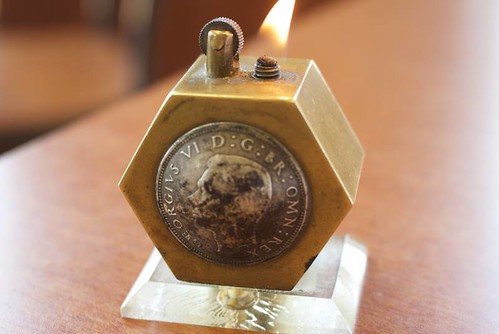
Frank Melanson is looking for some answers about an object he bought from a woman who was cleaning out her closet.
He’s a coin collector so it really caught his eye.
The object he found is believed to be a piece of naval trench art. It’s a brass bolt with two British Shillings covering the bolt holes. The interesting part about it is it’s a lighter.
“Was it made for someone? Does it have sentimental value? There’s all kinds of questions you can ask about it,” he said.
There’s a piece of flint and a hole for the flame to come out of on top. Then, there’s a plastic holder on the bottom that allows you to fill it with lighter fluid.
The shillings say 1945 on it and the woman who sold him it, had relatives who fought in World War Two, but she didn’t know anything about it.
“So, I figure there must be someone out there that knows something about it.”
Well, I suppose it's possible this was made by soldiers in the field killing time between battles, but it seems unlikely to me. The materials would not have been readily available, would they? Trench art typically involves carving on a found object such as a coin, not manufacturing items that incorporate coins. What do readers think? -Editor
To read the complete article, see:
Sparking an interest: Digby County summer resident hoping to find answers about lighter
(http://www.digbycourier.ca/community/sparking-an-interest-digby-county-summer-resident-hoping-to-find-answers-about-lighter-227191/)
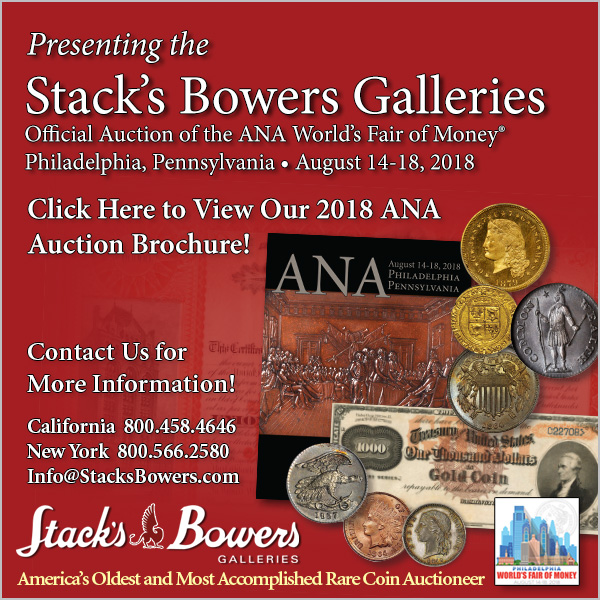
1864 $100 COMPOUND INTEREST TREASURY NOTE
So many great rarities have come to market recently that it's easy to get snowblind. In his July 18, 2018 Stacks Bowers blog article, Dave Bowers describes just one of the highlights of the Joel R. Anderson Collection being offered at next month's ANA sale. It is the best of only 13 known surviving examples of the 1864 $100 Compound Interest Treasury Note. -Editor
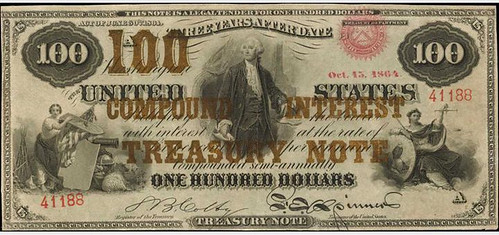
When it comes to descriptions of the over 200 large-size note types in the Joel R. Anderson Collection, “rare is common” so to speak. In no other auction of currency in American numismatic history has a collection had a higher average rarity and value! Starting years ago Mr. Anderson, who had been in numismatics since a teenager in the early 1960s and who had achieved business success, determined to obtain the finest quality example he could find of the large-size federal currency designs from 1861 to 1928. He set record after record, outbidding the competition to win rarities in the auction offerings of collections, including the first million-dollar note in world auction history (the $100 “Grand Watermelon Note”).
Earlier this year, in retirement age but still active, he tapped Stack’s Bowers Galleries to auction his collection. We are doing this in four parts. The first was held in March at the Whitman Coin & Collectibles Expo in Baltimore and set many new records. The second will be a highlight of the World’ Fair of Money to be held in Philadelphia next month. One of the great rarities coming up for sale is the marvelous note described below (from our catalog):
Finest Known Fr. 193b $100 Compound Interest Treasury Note
Friedberg 193b (Whitman-3390). 1864 $100 Compound Interest Treasury Note. PCGS Currency Extremely Fine 40.
It has been nearly a dozen years since an example of this rare $100 Compound Interest Treasury Note was publicly offered. Just 13 examples of this Fr. 193b (W-3390) are known to exist and this serial number 41188 example is the finest by quite a margin. The design type depicts Washington standing at center with allegorical depictions of The Guardian at left and Justice at right. Large 100 protectors are seen at top left and right while the engraved signatures of Colby and Spinner are seen near bottom center. A small red spiked Treasury Seal is at top right with the issue date of Oct. 15, 1864 below. Ideal bronzing is seen on this example with a large 100 in the upper left and COMPOUND INTEREST TREASURY NOTE across the center.
The intricate back design features large 100 counters at left and right with interest information at center. Any signs of circulation are light, as this example likely spent much time tucked away in anticipation of redemption which fortunately never occurred. Most of the handling is relegated to the edges and corners. The paper is still bright and free of any distracting marks or obvious impairments. PCGS mentions “Edge Restorations” on the back of the holder. Any such restoration work is deftly executed and difficult to detect even under close scrutiny.
Of the 13 examples of this catalog number known, most are recorded as Fine or Very Fine, with one of those residing in the National Numismatic Collection at the Smithsonian Institution. Three others are listed as Poor or Good. This is the lone note graded above Very Fine, long reported as Extremely Fine and now assigned a numeric grade of 40 by PCGS. It last sold publicly in an October 2005 auction for $66,125. Collector interest in these “middle of the (Friedberg) book” notes has been much stronger in recent years and we would not be surprised to see a realization that exceeds the high end of our estimate when our auctioneer cries “Sold!” for this wonderful piece. In actuality, the early issue should be at the front of the book, but cataloging has become more sophisticated since its first edition, and changing numbers is not easy to do. When the Friedberg book was released in 1953 it revolutionized the collecting of federal currency issued from 1861 onward.
$100 Compound Interest Treasury Notes of 1864
Compound Interest Treasury Notes of the $100 denomination were issued under acts dated March 3, 1863 and June 30, 1864. These notes bore interest at the rate of 6% per annum for three years. The notes were only payable at maturity with the bearer being due a total of $119.40 upon redemption three years after the issue date. It would seem logical that most were held by banks or in investment portfolios, but as extant examples are typically well-circulated, they must have continued in general commercial channels, valued at the final redemption figure. This is a reminder that there is still much history to be learned in the field of 19th century currency.
To read the complete article, see:
Another Rarest of the Rare Note from the Anderson Collection: 1864 Compound Interest Treasury Note
(http://www.stacksbowers.com/News/Pages/Blogs.aspx?ArticleID=3041)
To read the complete lot description, see:
Finest Known Fr. 193b $100 Compound Interest Treasury Note
(https://auctions.stacksbowers.com/lots/view/3-BG8DO)
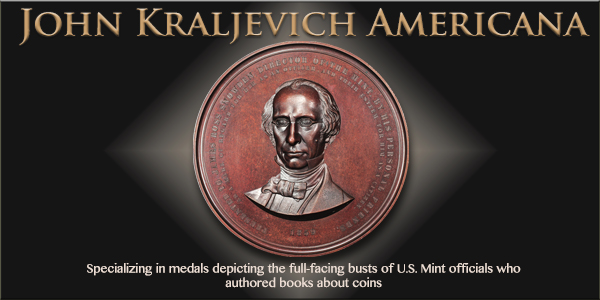
VENEZUELA'S WORTHLESS BANKNOTES
Stu and Maureen Levine forwarded this Economist article on the cash situation in Venezuela and the money art made from worthless notes. Thanks. -Editor
 VENEZUELAN hawkers on the border with Colombia call it “money art”. The handbags, purses and hats they sell are made from nearly new Venezuelan banknotes and sold as mementos. Payment is in “real money”, meaning Colombian pesos. The handicrafts cost the equivalent of $5 or so. The raw material—banknotes in denominations of two, five and even 100 bolívares—are still legal tender in Venezuela. But inflation is so high they are worth more folded up into origami objects than as cash. The free-market exchange rate is about 3.5m bolívares to a dollar.
VENEZUELAN hawkers on the border with Colombia call it “money art”. The handbags, purses and hats they sell are made from nearly new Venezuelan banknotes and sold as mementos. Payment is in “real money”, meaning Colombian pesos. The handicrafts cost the equivalent of $5 or so. The raw material—banknotes in denominations of two, five and even 100 bolívares—are still legal tender in Venezuela. But inflation is so high they are worth more folded up into origami objects than as cash. The free-market exchange rate is about 3.5m bolívares to a dollar.
The worthlessness of Venezuela’s currency is the result of inflation, 46,000% a year, which in turn is largely caused by the printing of money to finance the government’s deficit of 30% of GDP. But there is also a shortage of banknotes. In the looking-glass world of Venezuela’s economy, cash itself trades at a premium to its face value, making it slightly less worthless than bolívares in other forms.
Banknotes, like other necessities, are mostly imported. Four foreign firms—including Crane from the United States and De La Rue, a British firm—print the bulk of them. The central bank’s own printer, near the city of Maracay, produces less than 5% of cash. Two years ago the bank’s then-president, Nelson Merentes, predicted that Venezuela would become an exporter of banknotes, but that never happened. The printer can barely keep enough workers to fulfil its modest domestic order book, probably because they are paid in the same near-worthless currency they print.
To read the complete article, see:
Venezuelan cash is almost worthless, but also scarce
(https://www.economist.com/the-americas/2018/07/14/venezuelan-cash-is-almost-worthless-but-also-scarce)
To read an earlier E-Sylum article, see:
VENEZUELA CRAFTSMEN USE WORTHLESS BANKNOTES
(http://www.coinbooks.org/v21/esylum_v21n07a31.html)
SOMALILAND GOES CASHLESS
The Wall Street Journal recently ran an article about the situation in Somaliland where extreme economic are creating a cashless society. Here's an excerpt. -Editor
 Hyperinflation and economic isolation have pushed this poor, breakaway republic closer to a virtual milestone than most other countries in the world: a cashless economy.
Hyperinflation and economic isolation have pushed this poor, breakaway republic closer to a virtual milestone than most other countries in the world: a cashless economy.
Mobile-money services have taken off over the past decade in Africa; 1 in 10 adults across the continent—about 100 million people—use them. In Kenya, Vodacom Group Ltd.’s groundbreaking service M-Pesa, broadly considered the first major and most successful mobile-money technology platform, counts 26 million users, roughly half the population. More than half of the world’s 282 mobile-money platforms are in sub-Saharan Africa, research by McKinsey & Co. shows.
The continent, home to many of the world’s frontier economies, has come closest to skipping, or “leapfrogging” as it’s often called, traditional brick-and-mortar banks and going straight to heavily using phones as wallets.
And nowhere are the benefits of mobile money more apparent than in Somaliland, where the extreme economic and financial conditions have allowed Zaad, a service from the main local telecom, Telesom, to catalyze commerce in one of the most isolated parts of the world.
The country prints its own currency, the Somaliland shilling, but the exchange rate is around 10,000 or more to the dollar, money traders say. This leads to wide use of the greenback, which arrives through remittances and major aid agencies that operate here and mainly pay in the U.S. currency.
The reasons for mobile money’s success in Somaliland are on full display on Hargeisa’s busy, bumpy streets, where rows of money changers lounge in front of 3-foot-tall towers of cash, some held together by nets, others in sacks. To get the shillings to a customer’s car, most money exchanges employ assistants armed with wheelbarrows to lug the heavy bags.
Once a week, Abdulahi Abdirahman hauls two bulky, heavy sacks of shillings from his gas station across Hargeisa to the money-exchange area downtown and, several hours later, returns with just a few dollar notes in his back pocket and his Zaad wallet loaded up.
To read the complete article (subscription required), see:
An Isolated Country Runs on Mobile Money
(https://www.wsj.com/articles/an-isolated-country-runs-on-mobile-money-1530882001)

RUSSIAN SHIPWRECK FIND STIRS GOLD FEVER
The discovery off South Korea of the wreck of a Russian Imperial Navy cruiser said to have been carrying a trove of gold has gotten people in a stir. But is there really any gold? -Editor
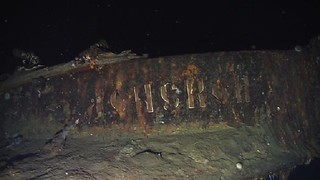 A 19th century Imperial Russian warship claimed to be carrying billions of dollars in gold has been found off the coast of Korea.
A 19th century Imperial Russian warship claimed to be carrying billions of dollars in gold has been found off the coast of Korea.
It was 1905 and a tremendous naval battle known as the Battle of Tsushima took place during the Russo-Japanese. Much of the Imperial Russian fleet was defeated by the Japanese.
One of the victims was the 5,800 tonne cruiser, Dmitrii Donskoi, scuttled after sustaining severe damage to its stern.
For decades rumours swirled that the ship carried thousands of boxes of bullion and coins, the salaries of crew, wealth for port expenses, and possibly gold from other ships in the flotilla and possibly Russian gold from other sources A South Korean construction company discovered what might be the ship in 2000 but soon went bankrupt.
Another South Korean treasure hunting operation, the Shinil Group hired well-known deep sea technology company Nuytco Research Ltd. of Vancouver. Nuytco had previously located the WW-I wreck of the Lusitania off the coast of Ireland, and that of the Great Lakes cargo ship, Edmund Fitzgerald.
Within two days, the Canadian firm, using two of its specialised designed submersibles located and positively identified the wreck as the Dmitrii Donskoi.
This discovery has caused a frenzy of investment activity in the Shinil Group which has said it will attempt to raise the ship later this year.
One group apparently seeks to raise funds with a cryptocurrency offering backed by the treasure. Or should we say "treasure"? -Editor
While the thought of up to $130 billion worth of gold is causing shivers of excitement in investors and others, several historians are expressing doubt.
“The Investor” website says Shinil is using the discovery and claims of vast gold find to fund its own crypto-currency. The website is recommending caution for investors.
To read the complete article, see:
Sunken Czarist treasure ship found
(http://www.rcinet.ca/en/2018/07/19/sunken-czarist-treasure-ship-found/)
Kellen Hoard forwarded this Bloomberg article. Thanks. -Editor
It doesn’t take much to rev up the imaginations of South Korean day traders. And when rumors were fanned that a ship carrying $132.5 billion of gold had been found off the country’s coast, minds started to race.
Regulators are suggesting that people get a grip.
Here’s what’s known. British newspaper the Telegraph and local media reported that a salvage team discovered the Russian Imperial Navy cruiser Dmitri Donskoi. The warship sank off the island Ulleungdo 113 years ago, rumored to be carrying 200 tons of gold, the Telegraph said.
It’s not totally clear why, but a handful of stocks seemed to move on the report.
In a warning issued after the markets closed, South Korea’s Financial Supervisory Services said investors need to be cautious when it comes to buying stocks related to the shipwreck-exploration business without checking the facts on the Russian ship. “Anyone who spreads groundless rumors on the vessel will be charged of violations of criminal laws or fined,” the regulator said in a statement.
FSS cited a similar case when investors lost money by investing in a company whose stock surged on claims of having discovered a treasure ship. The company, at the end, went bankrupt, leading to “massive losses” for investors, according to the regulatory agency.
In 2000, Bloomberg reported that a South Korean company claimed to have discovered the wreckage of the same warship, Dmitri Donskoi, but that a Russian scholar debunked suggestions the vessel was carrying gold.
“There is no archival material or scientific evidence to support the idea that there is gold on the Dmitri Donskoi,” Sergei Klimovsky, then head of scholarly research at the Central Naval Museum in St. Petersburg, told Bloomberg. “This question of gold on Russian warships occasionally arises, but there is none, and the Koreans will be wasting their money.”
To read the complete article, see:
Sunken Treasure Ship Discovery Reports Roil Some Korean Stocks
(https://www.bloomberg.com/news/articles/2018-07-18/sunken-treasure-ship-discovery-reports-roil-some-korean-stocks)
Dick Hanscom forwarded this Daily Mail article. -Editor
Meanwhile it emerged that two other organisations 'discovered' the same wreck years before, including one which went bankrupt after being accused of spreading false rumours to bump up its stock price.
To read the complete article, see:
Is claim that divers found £100 BILLION of gold in Russian shipwreck a SCAM? South Korea probes whether investors are being misled as it emerges the same wreck has been 'discovered' three times
(http://www.dailymail.co.uk/news/article-5971169/Is-claim-divers-100-BILLION-gold-Russian-shipwreck-SCAM.html)
GIANT COIN THEFT FAMILY PROPERTIES SEIZED
Dick Hanscom fowarded this Daily Mail article about the alleged thieves of the giant gold coin from Germany's Bode Museum. -Editor
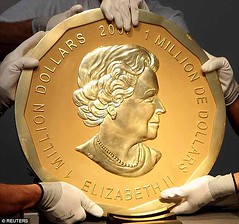 Police have seized 77 properties from a notorious Lebanese criminal family living in Berlin as they are investigated over the theft of a £3.3million gold coin.
Police have seized 77 properties from a notorious Lebanese criminal family living in Berlin as they are investigated over the theft of a £3.3million gold coin.
Officers provisionally seized apartments, houses and land across the city worth a total of £9million from the Remmo family on Thursday, accusing members of making the purchases with ill-gotten gains.
It comes a year after police arrested three family members on suspicion of stealing The Big Maple Leaf coin from Bode Museum, in Berlin, in March 2017.
To read the complete article, see:
Lebanese mafia who 'stole the world's biggest gold coin weighing 220lbs and worth £3.3million then melted it down after daring heist on German museum' have 77 properties seized in raids
(http://www.dailymail.co.uk/news/article-5974951/German-police-raid-Lebanese-mafia-family-Maple-Leaf-gold-coin-heist.html)
Another reader forwarded this BBC News article on the raids. -Editor
To read the complete article, see:
Berlin police seize Lebanese clan's property empire
(https://www.bbc.com/news/world-europe-44886543)
BUDDHIST MONK ARRESTED FOR COUNTERFEITING MONEY
A head-scratching headline from Sri Lanka: "Buddhist monk arrested for counterfeiting money". Then there was the July 10, 2018 headline: "Buddhist monk arrested for strangling police officer to death". Not the same monk, I guess. -Editor
A Buddhist monk has been arrested in Chilaw on suspicion of counterfeiting money.
Sri Lankan police arrested the monk who was in possession of counterfeit 1000 rupee notes after receiving information from businesses in the area, where the monk has attempted to make purchases using the counterfeit money.
Counterfeiting equipment including two printers, a scanner and 200 sheets of special printing paper used for counterfeits were found by police when searching the monk’s resident temple in Mahameddewa, Navagaththegama.
To read the complete article, see:
Buddhist monk arrested for counterfeiting money
(https://www.tamilguardian.com/content/buddhist-monk-arrested-counterfeiting-money)
FEATURED WEB SITE: SOUVENIR CARD COLLECTORS
This week's Featured Web Site is the Souvenir Card Collectors Society.
Since 1981, the Souvenir Card Collectors Society has worked to promote this hobby and help collectors understand and catalog the many types of souvenir cards in existence. More than 1,000 varieties of intaglio souvenir cards have been issued since 1960 and hundreds more non-intaglio varieties. The Society maintains an ongoing numbering system as new cards are issued.
The SCCS is the only not-for-profit organization specifically devoted to collectors of souvenir cards and intaglio prints. We welcome new members and those interested in learning and contributing their knowledge about souvenir cards and bank note engravings.

http://www.souvenircards.org


